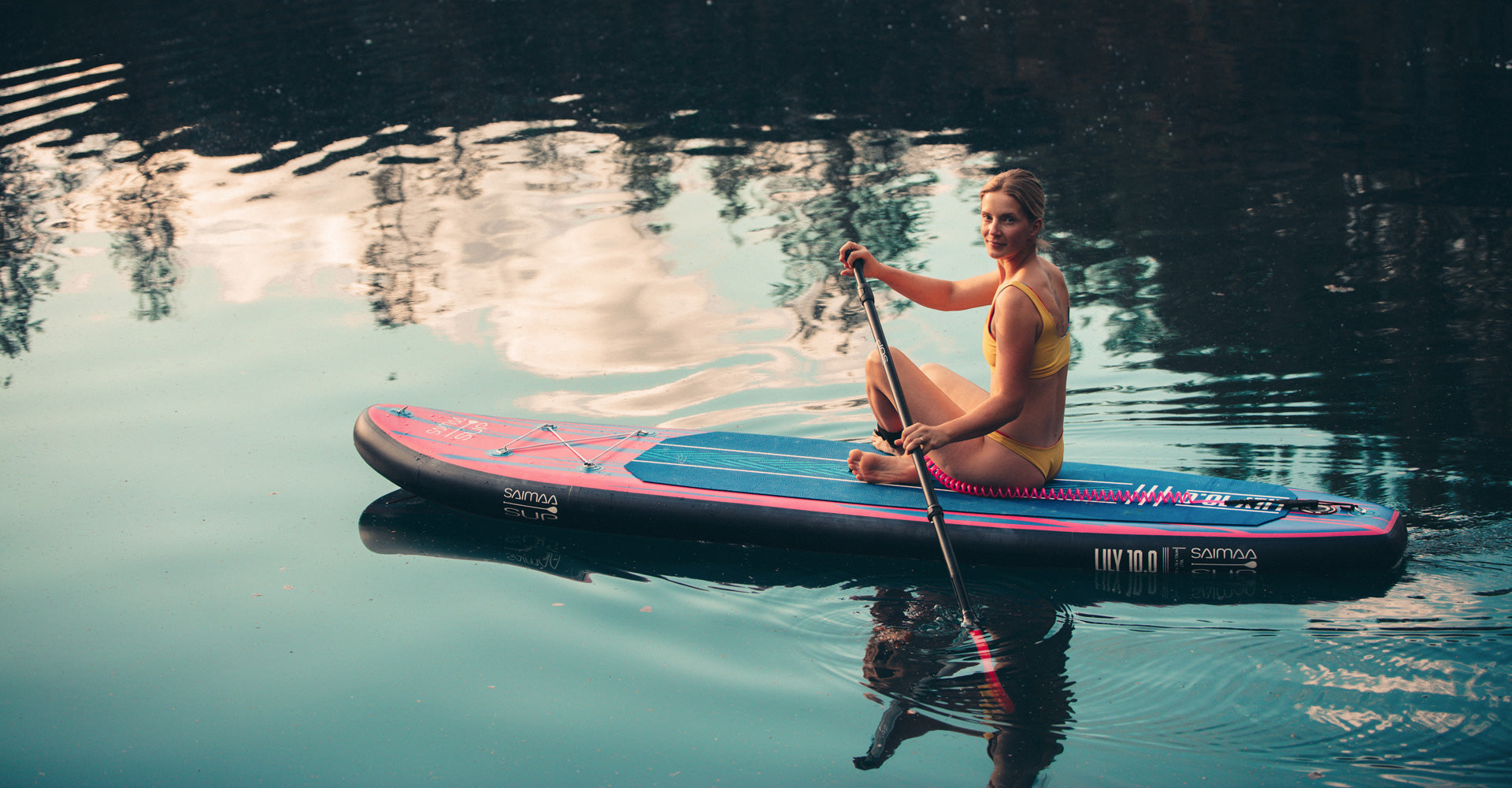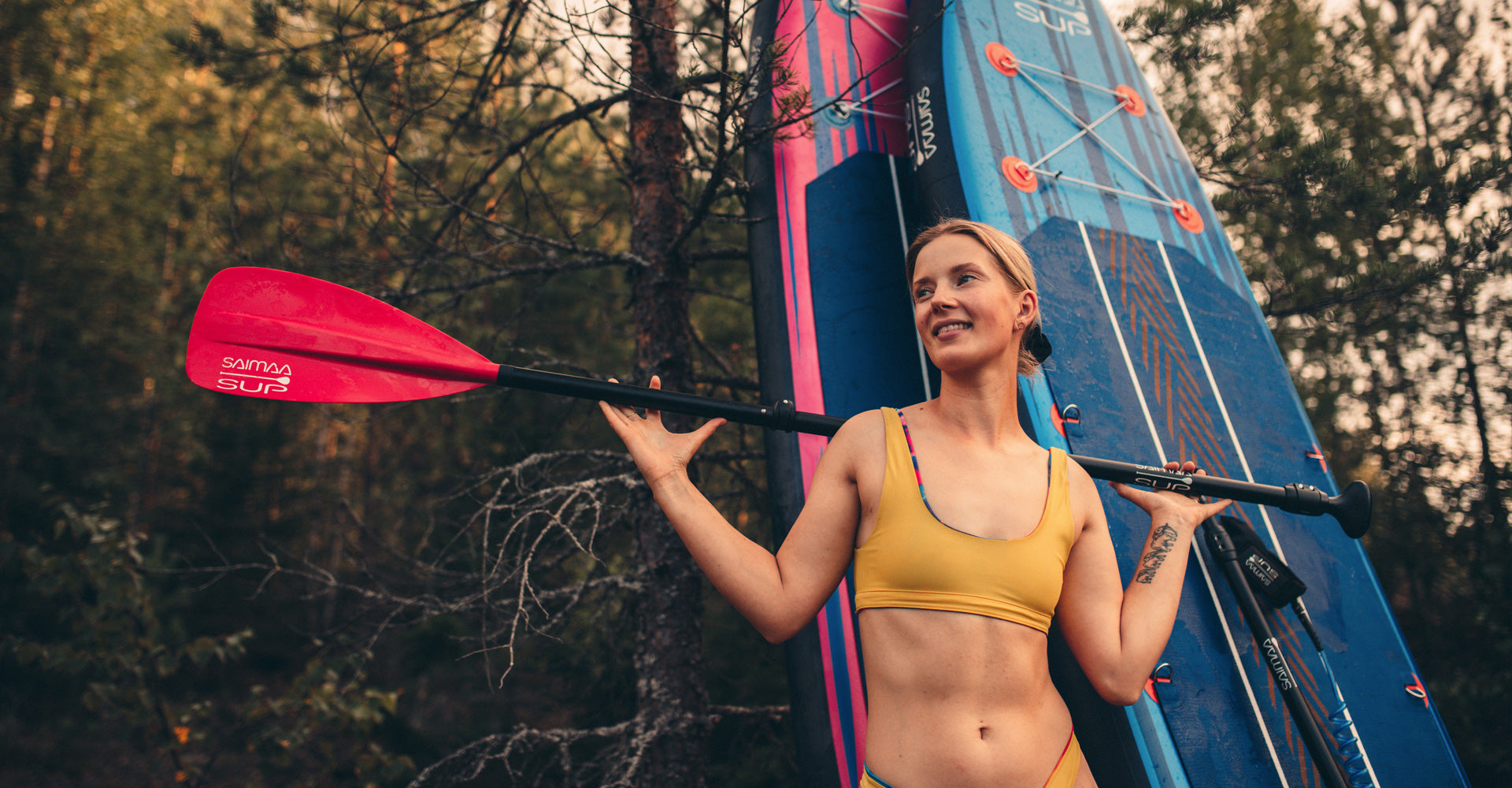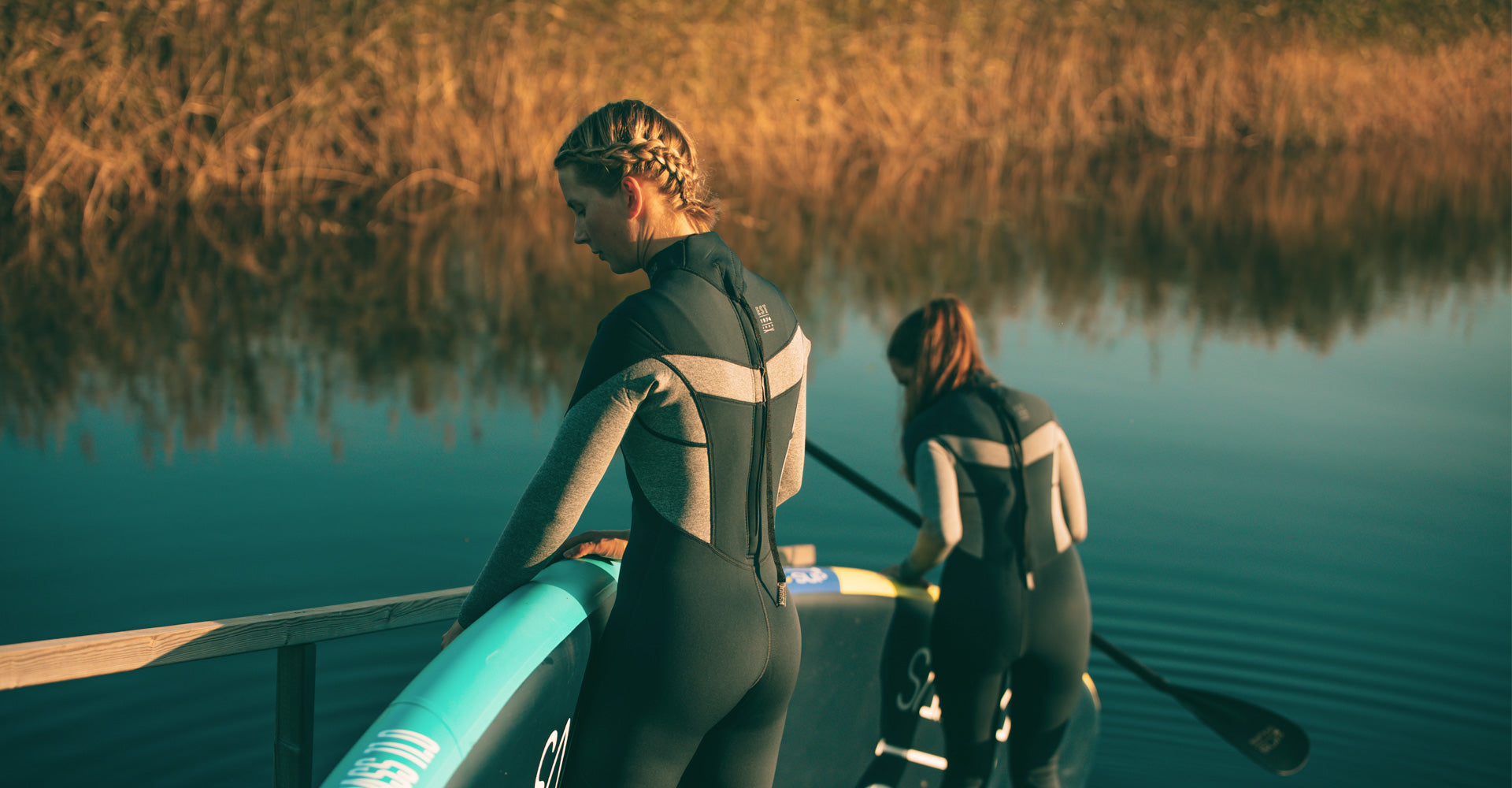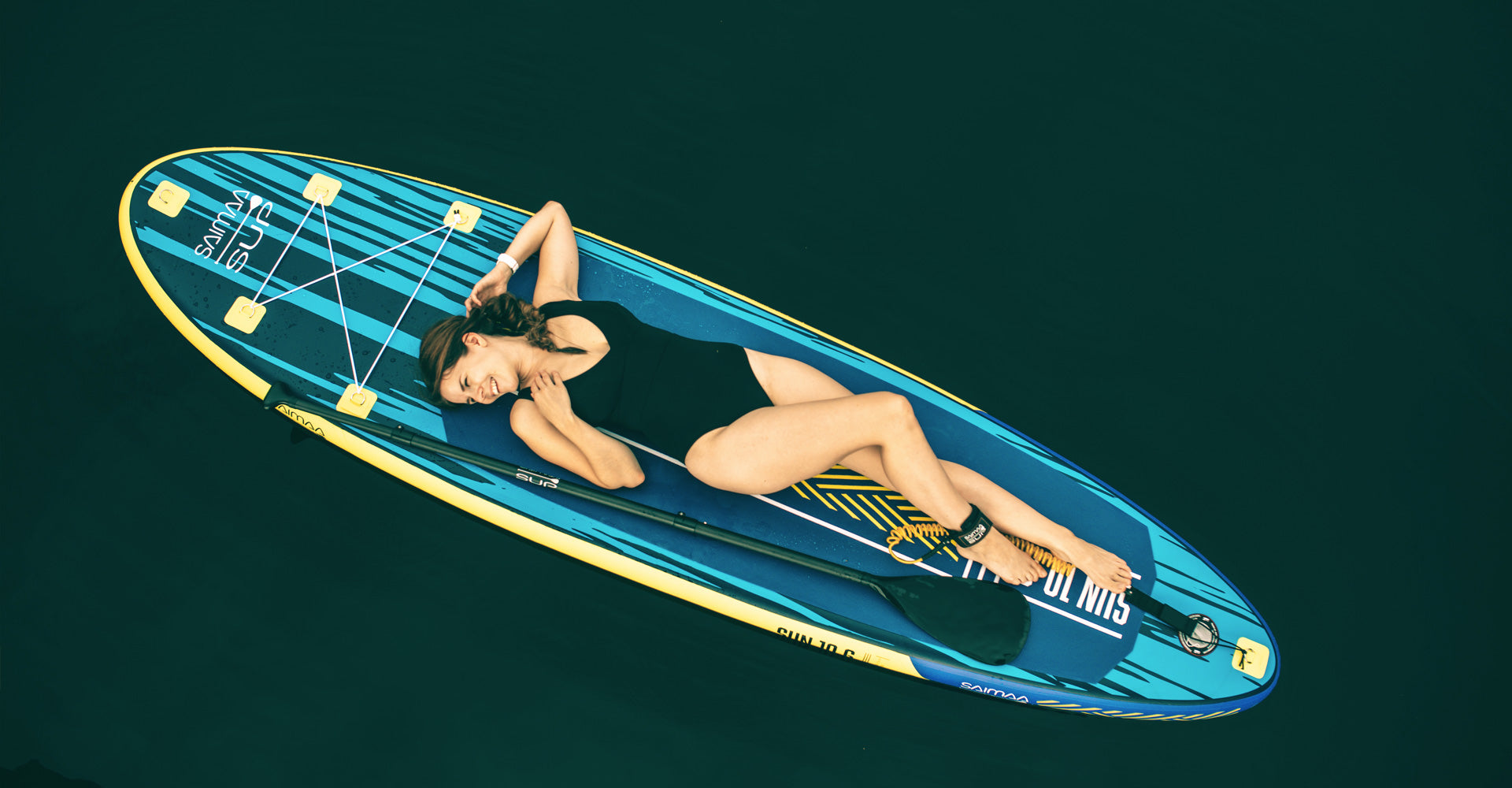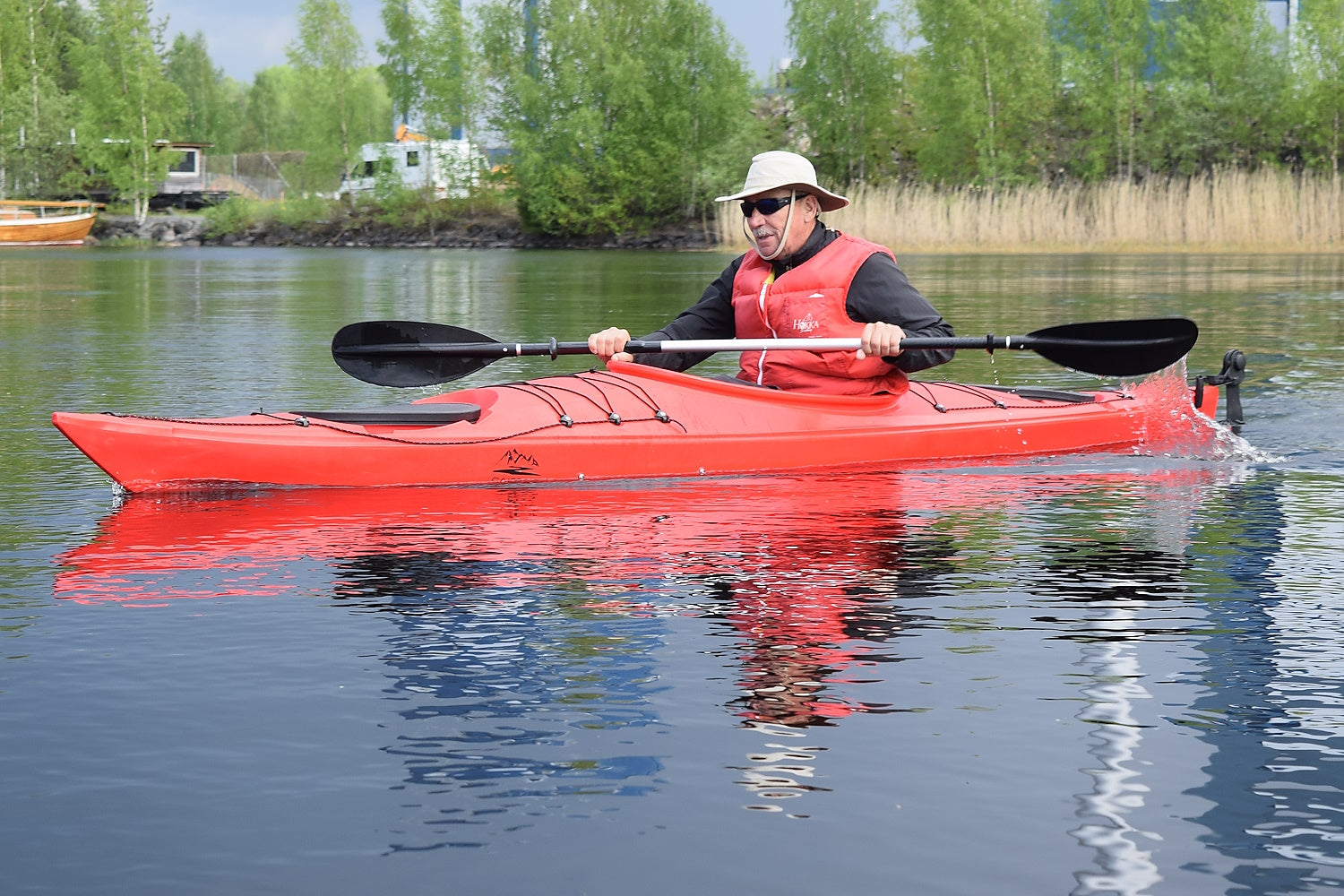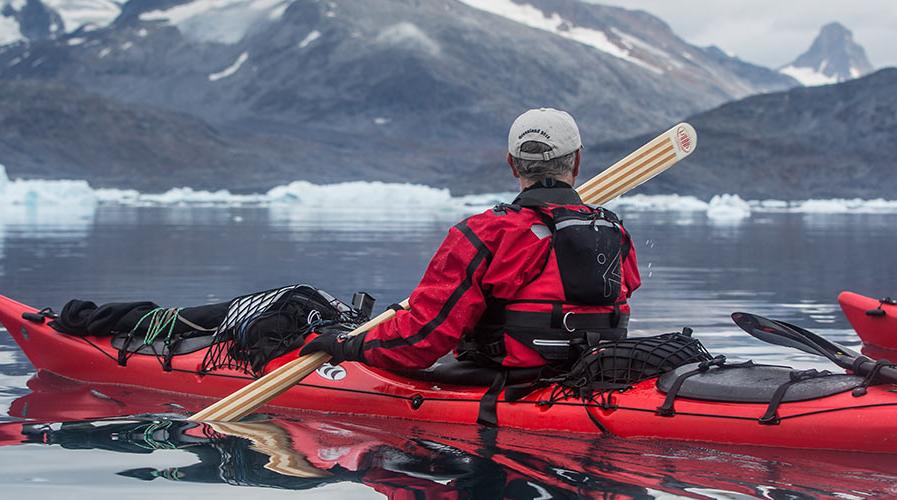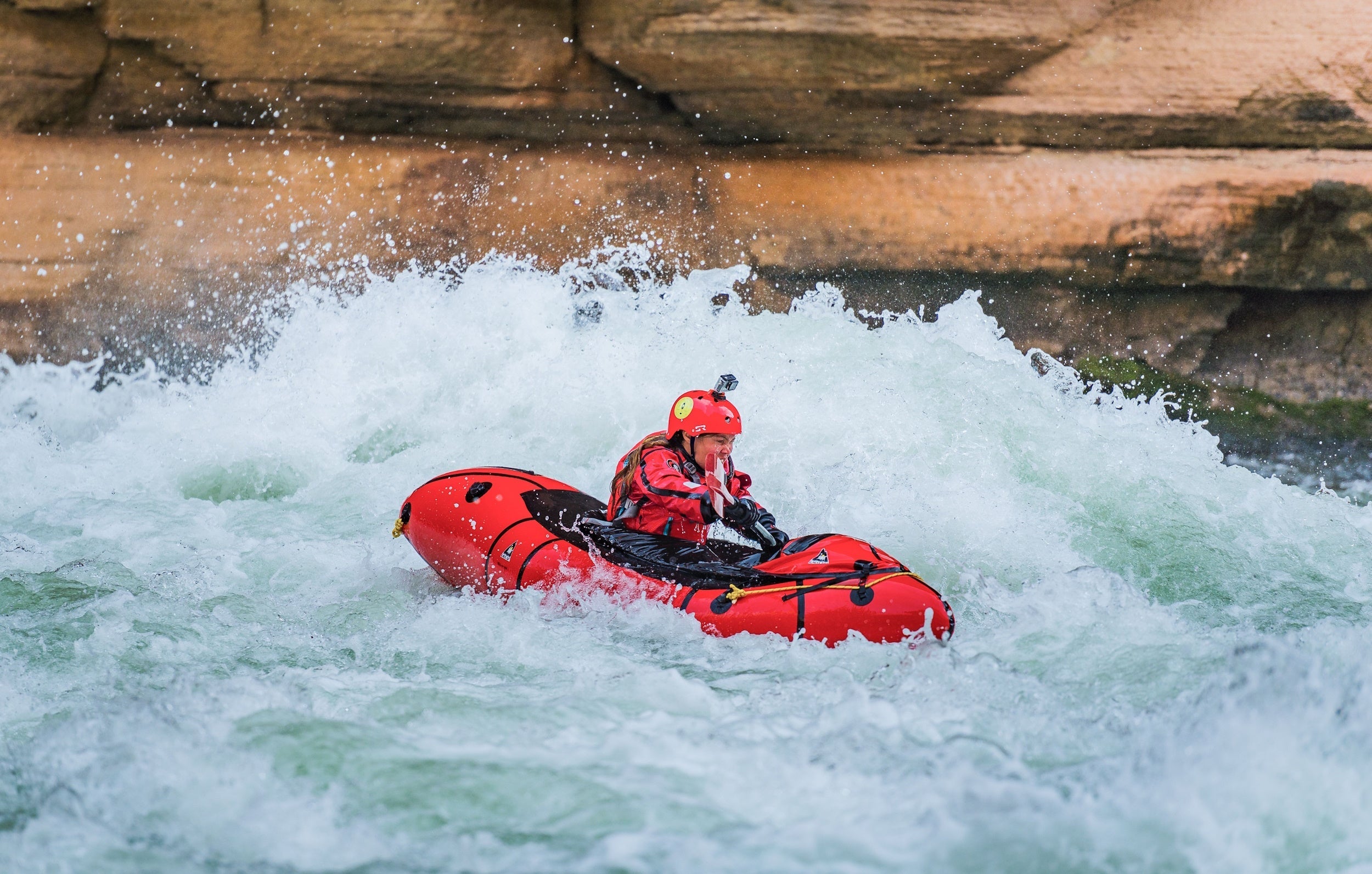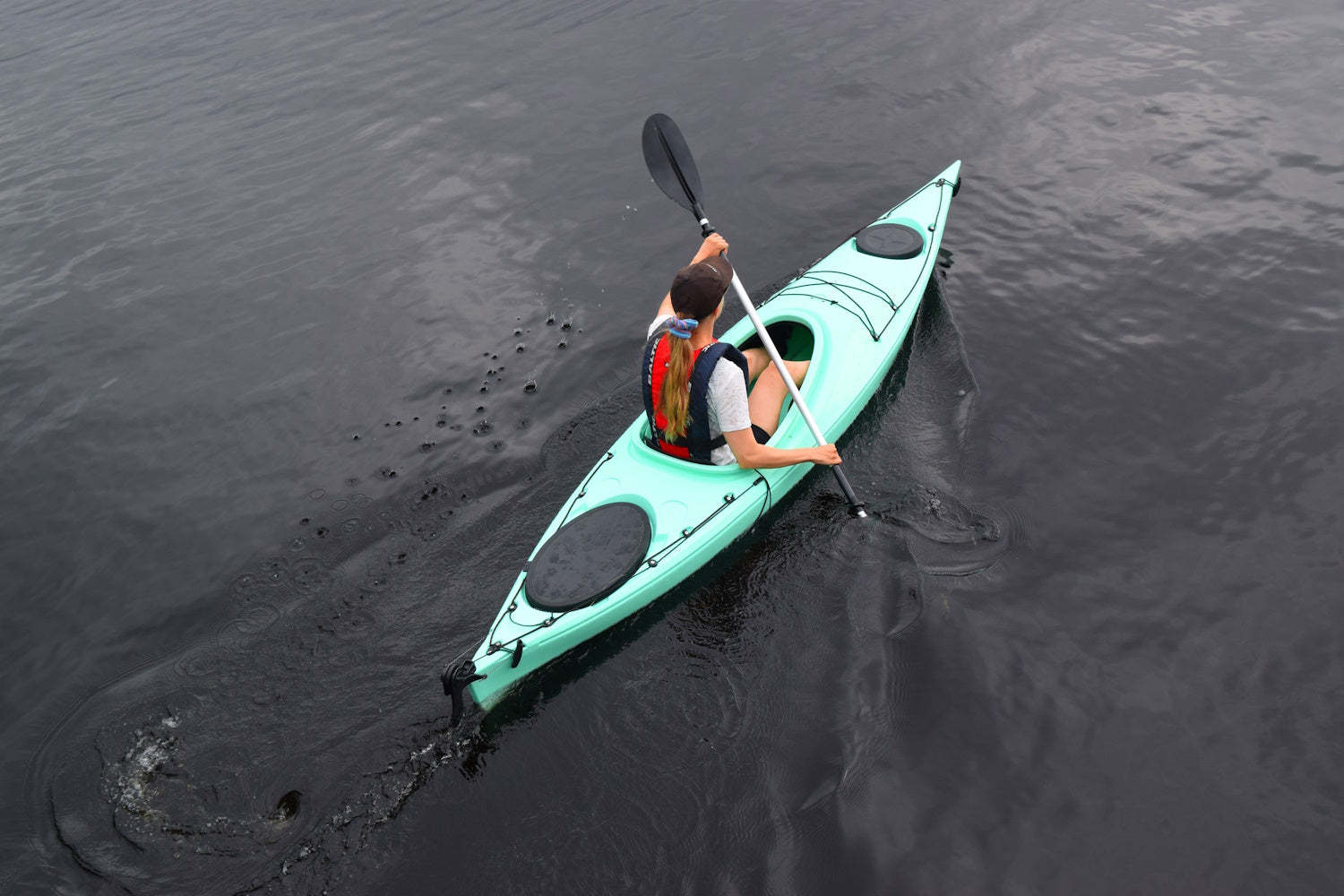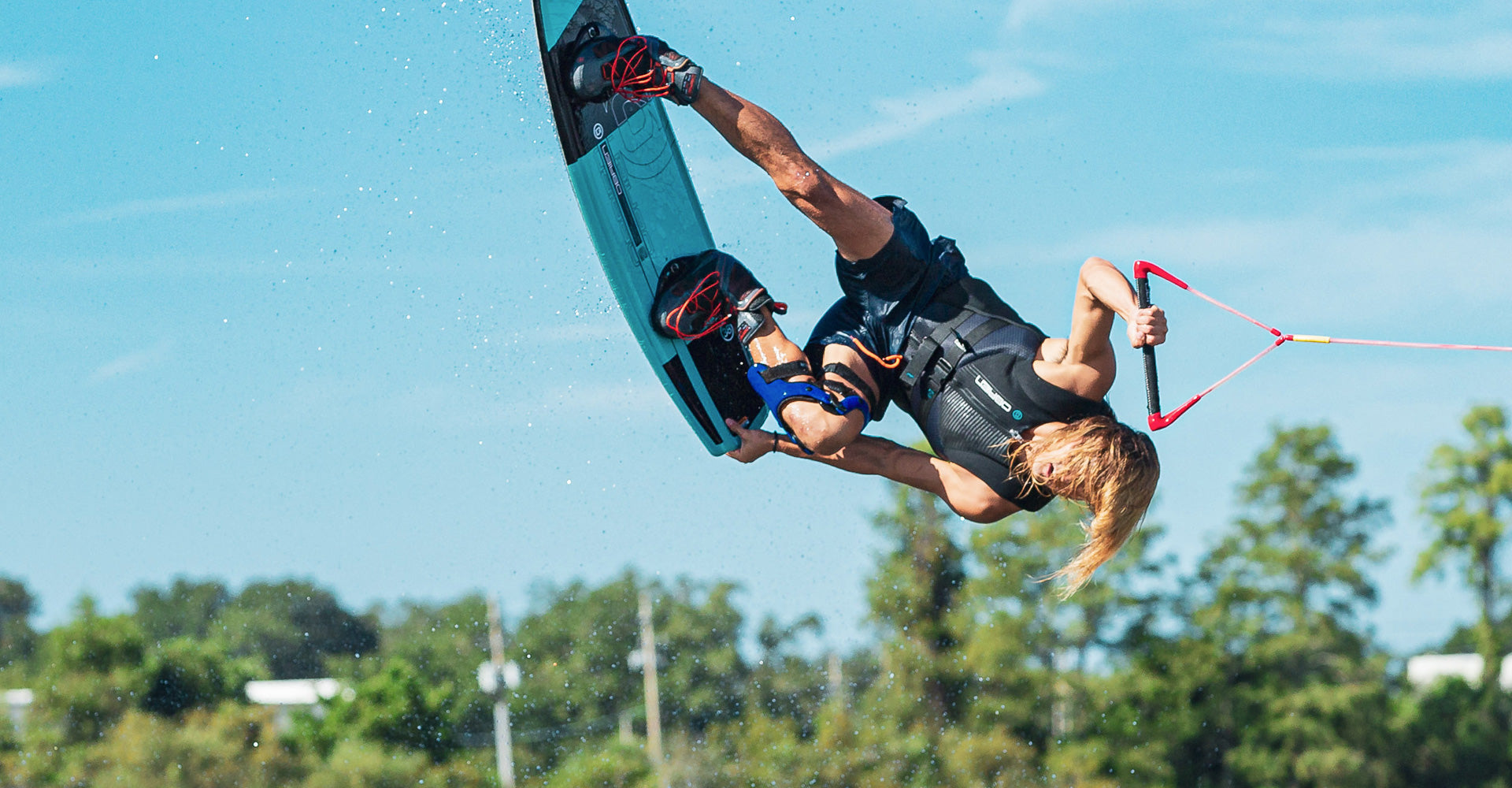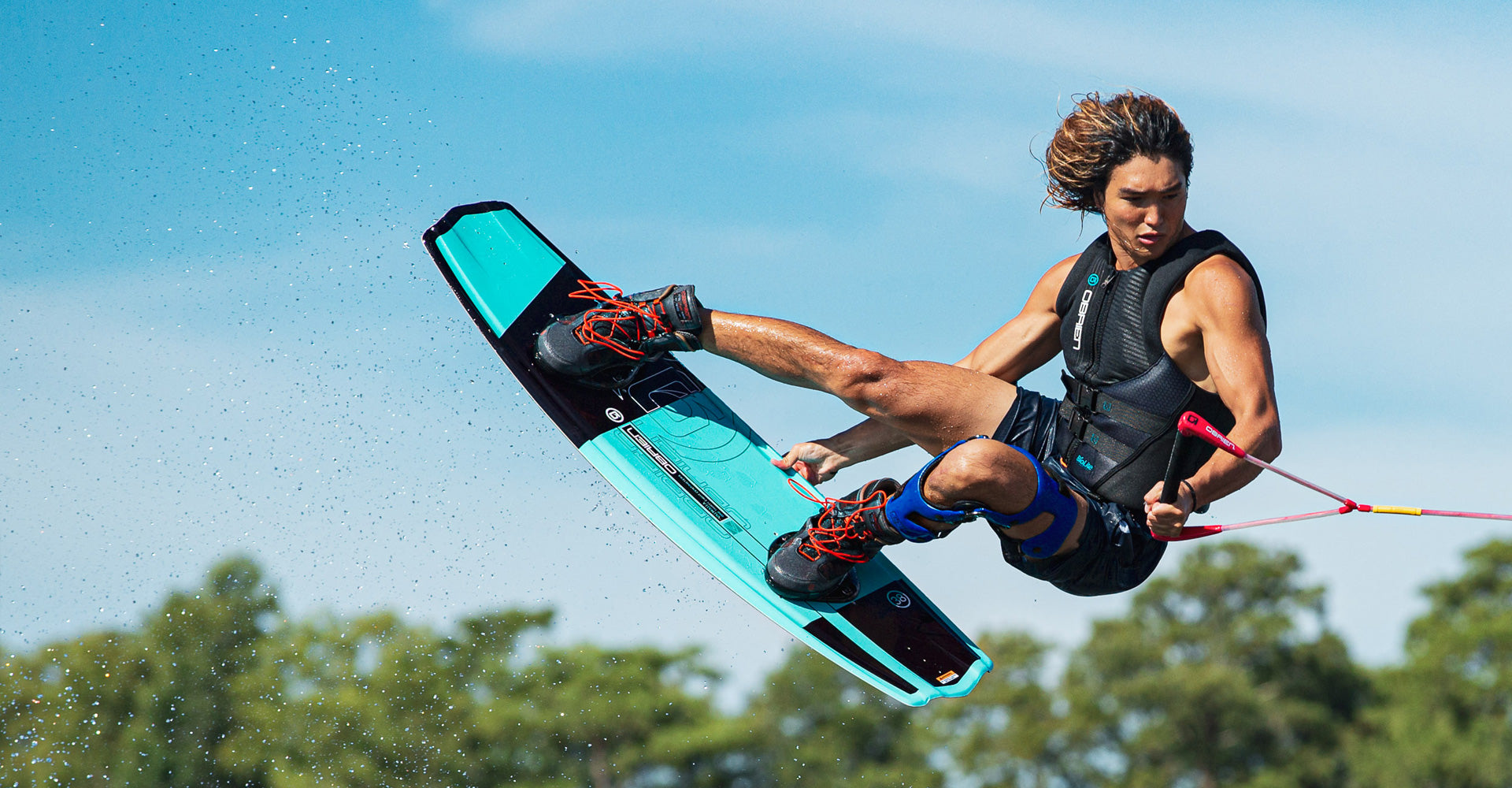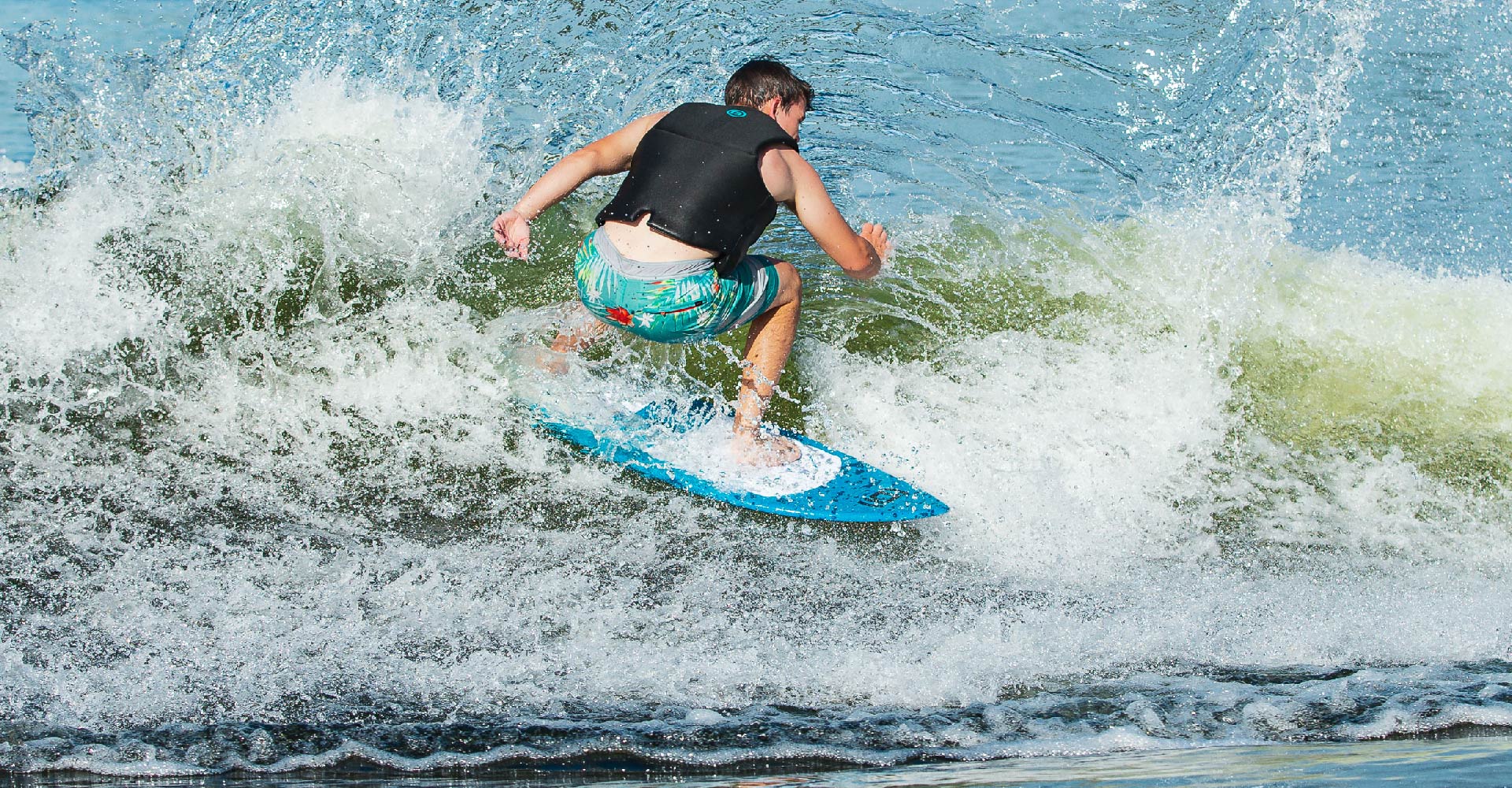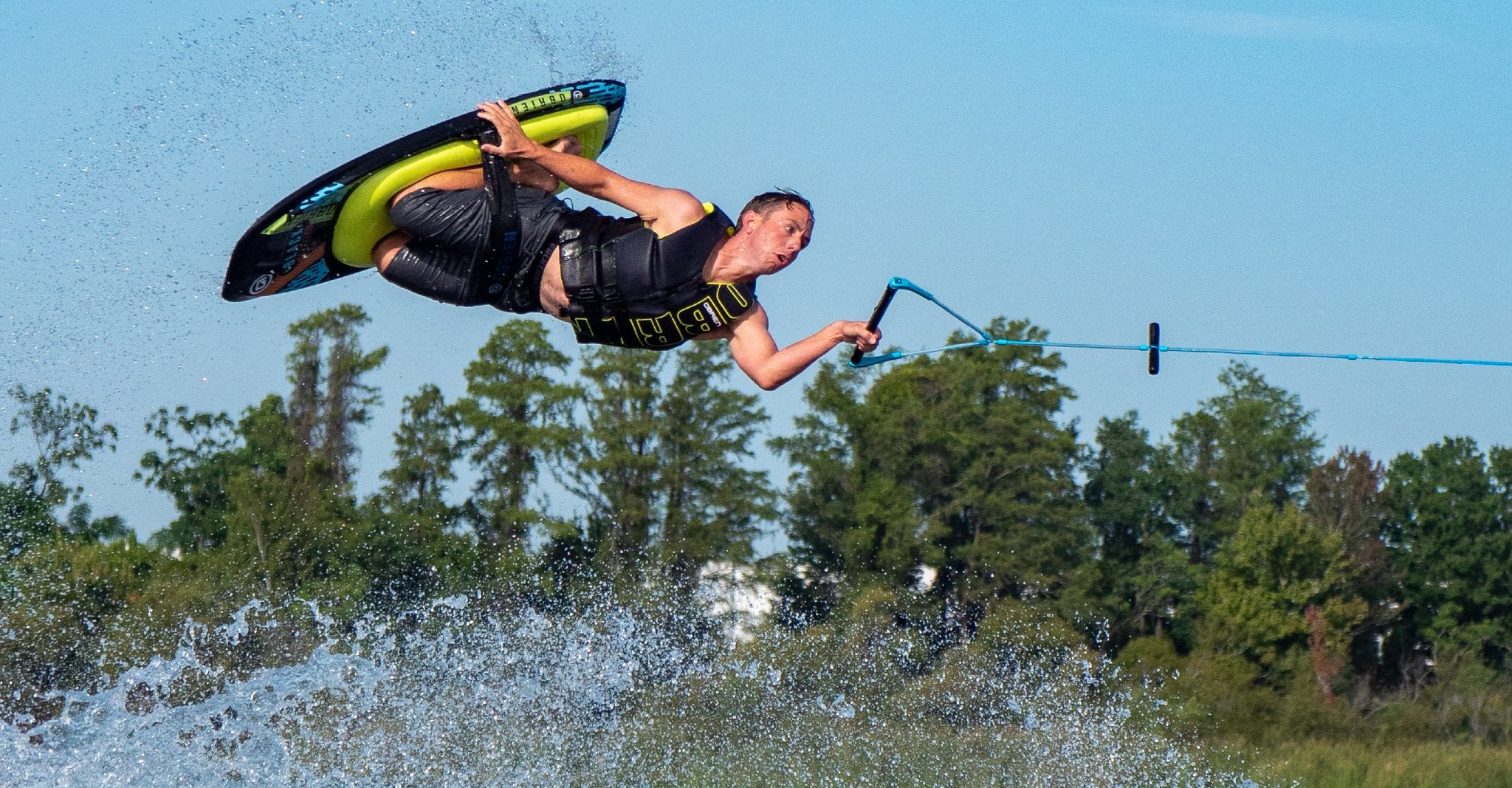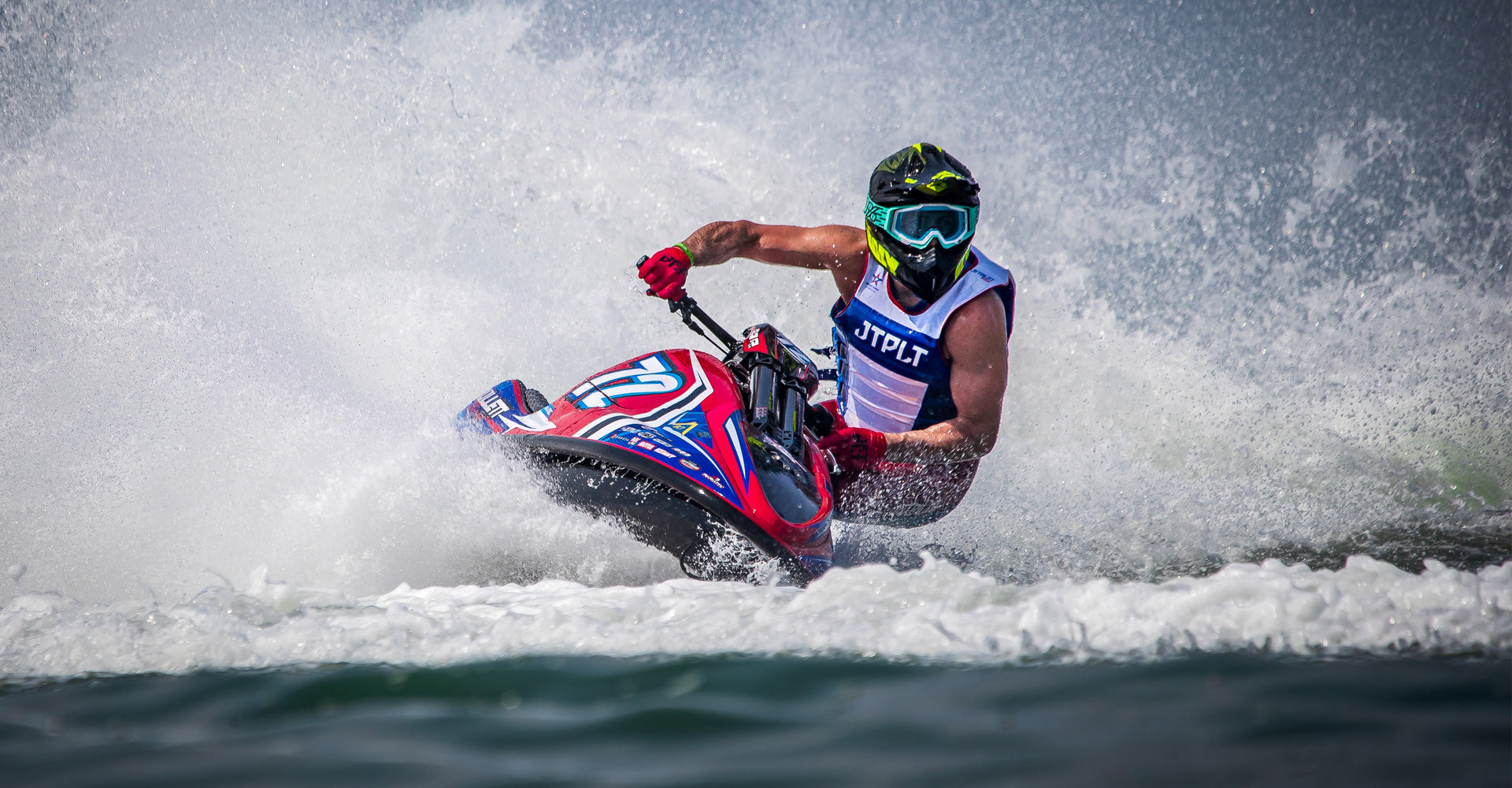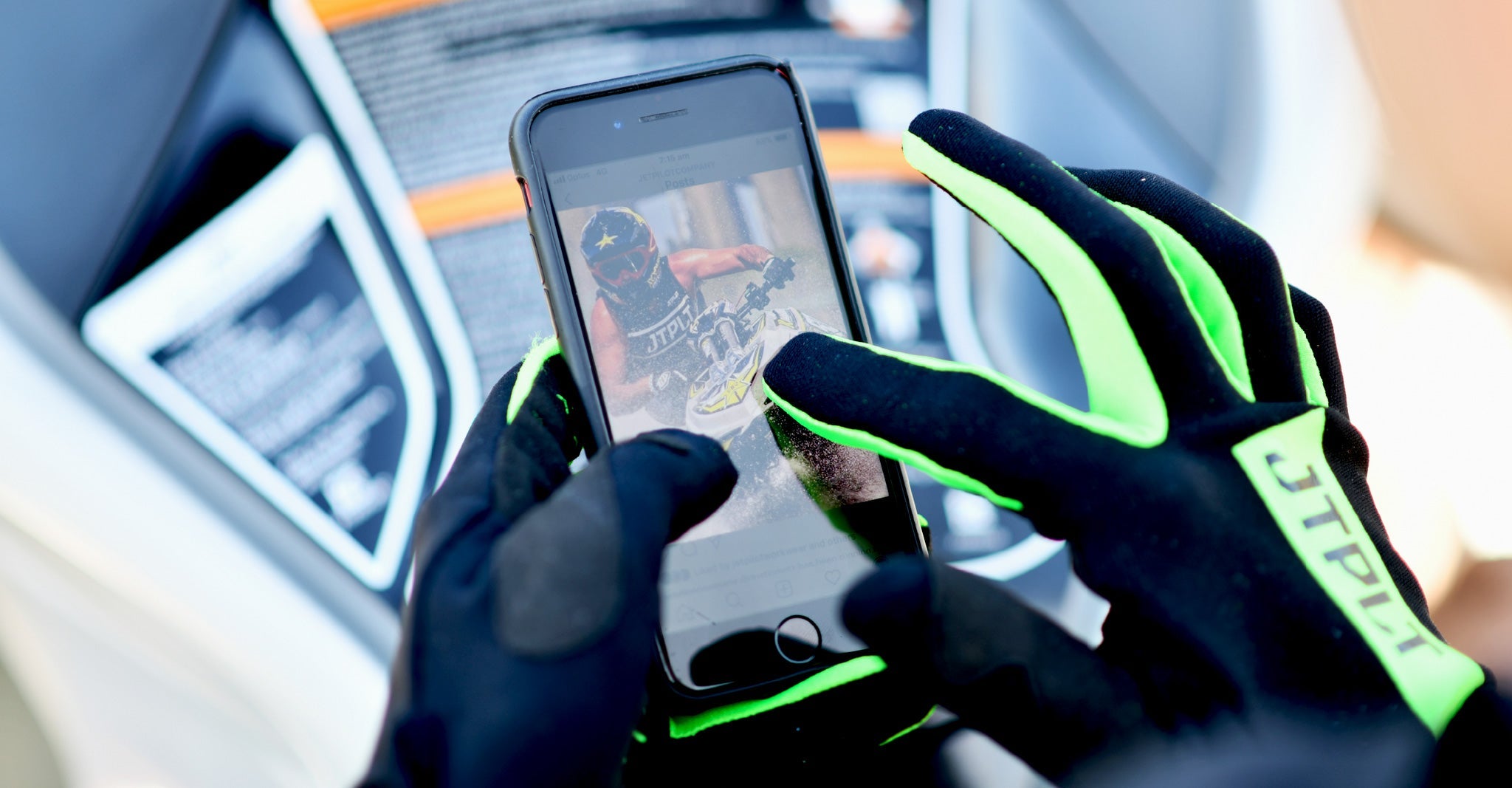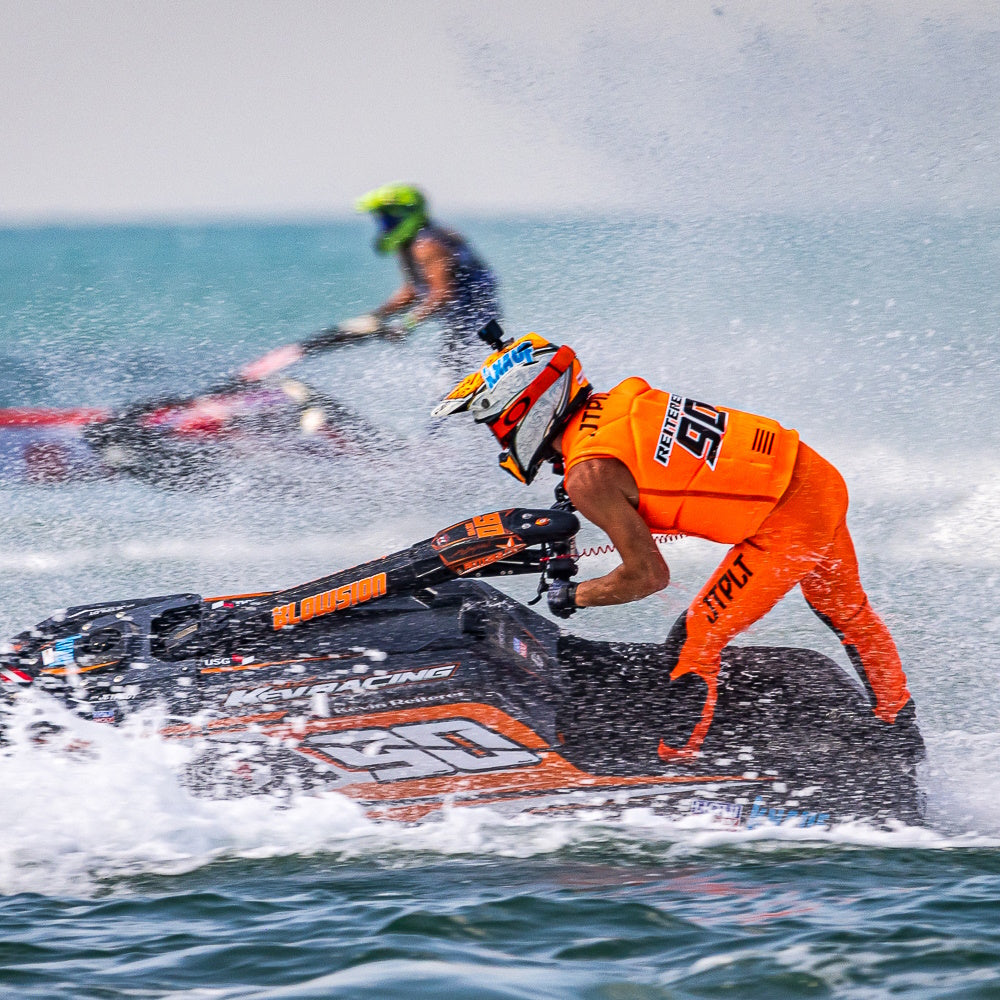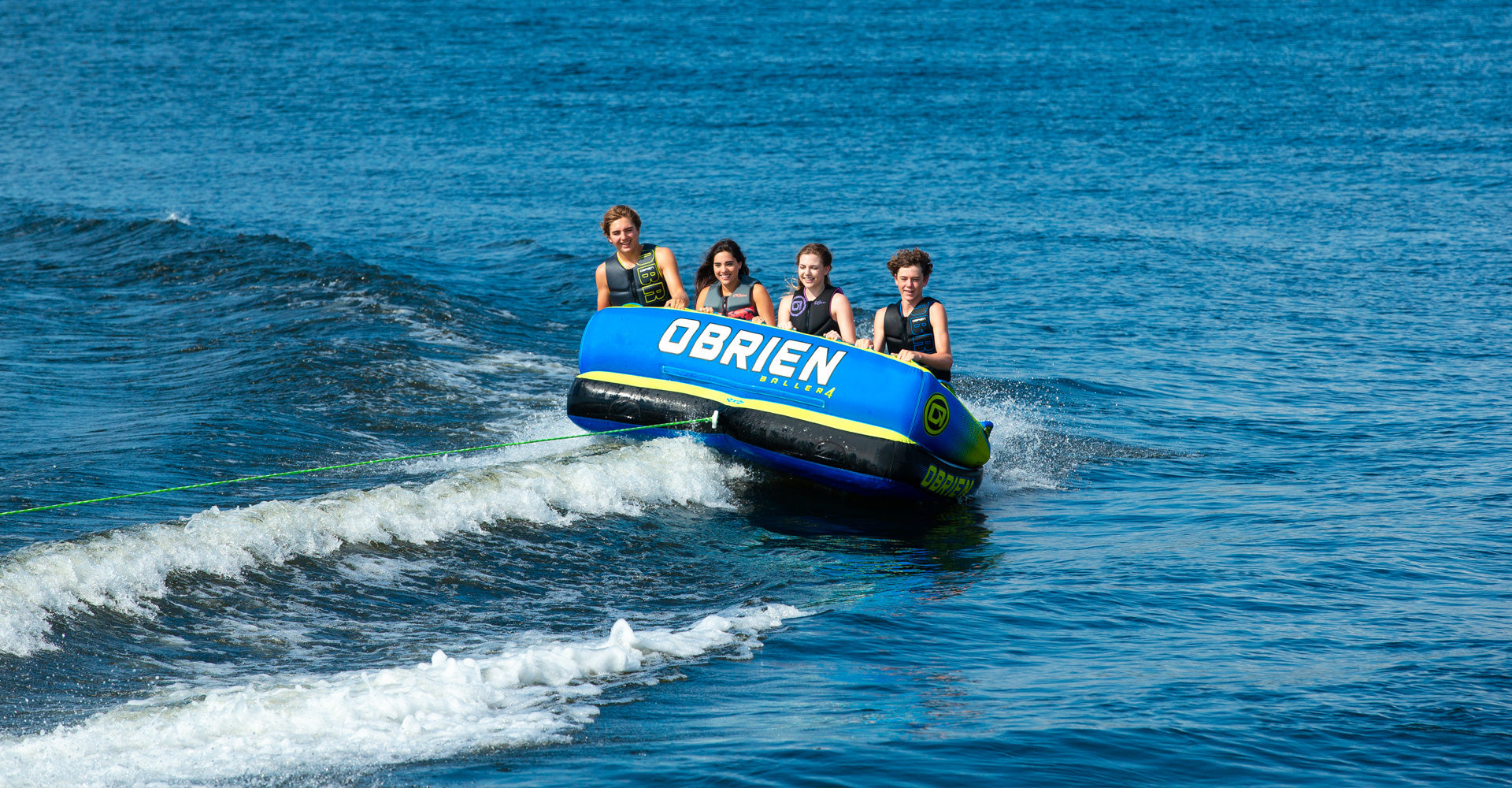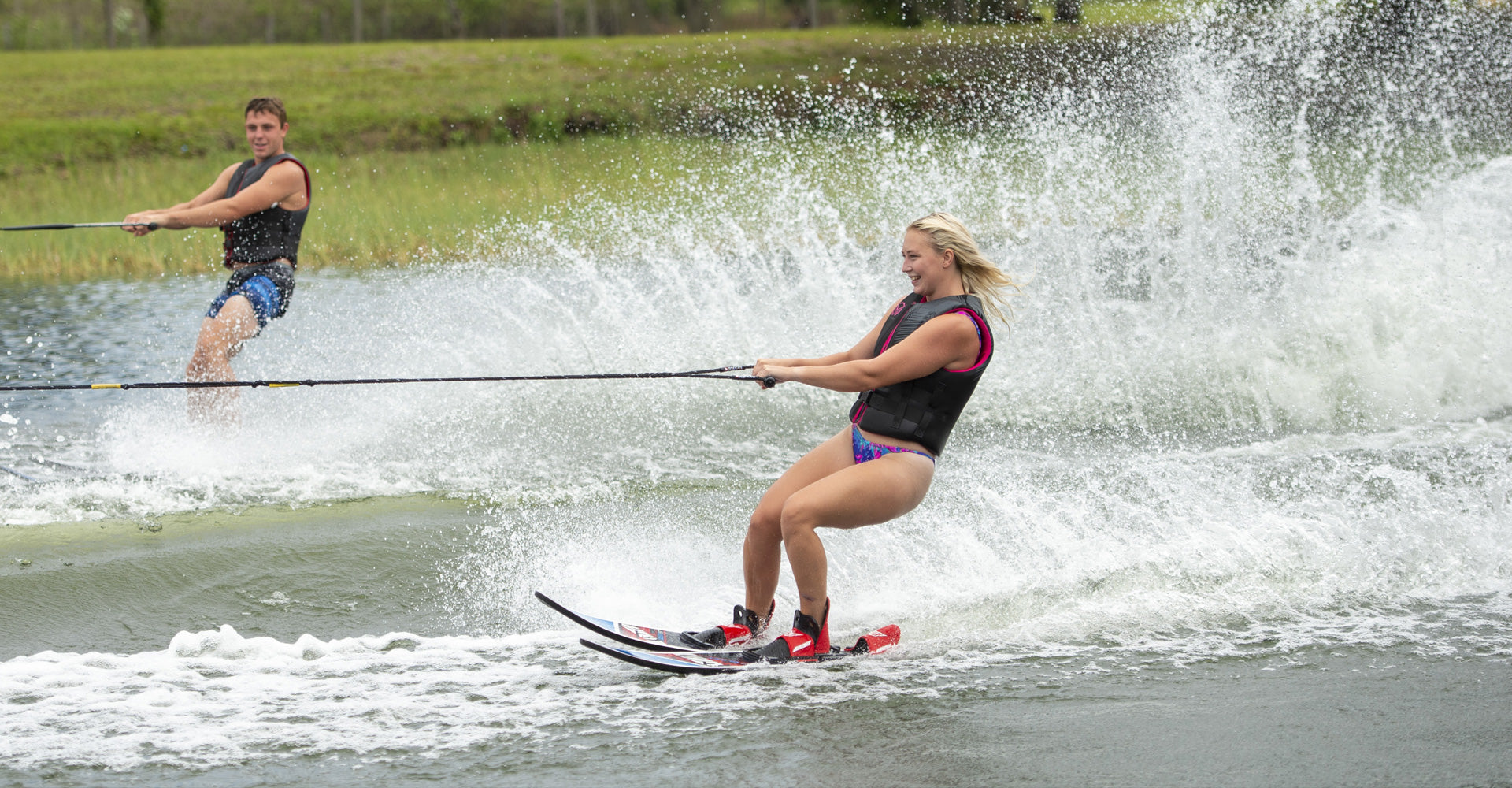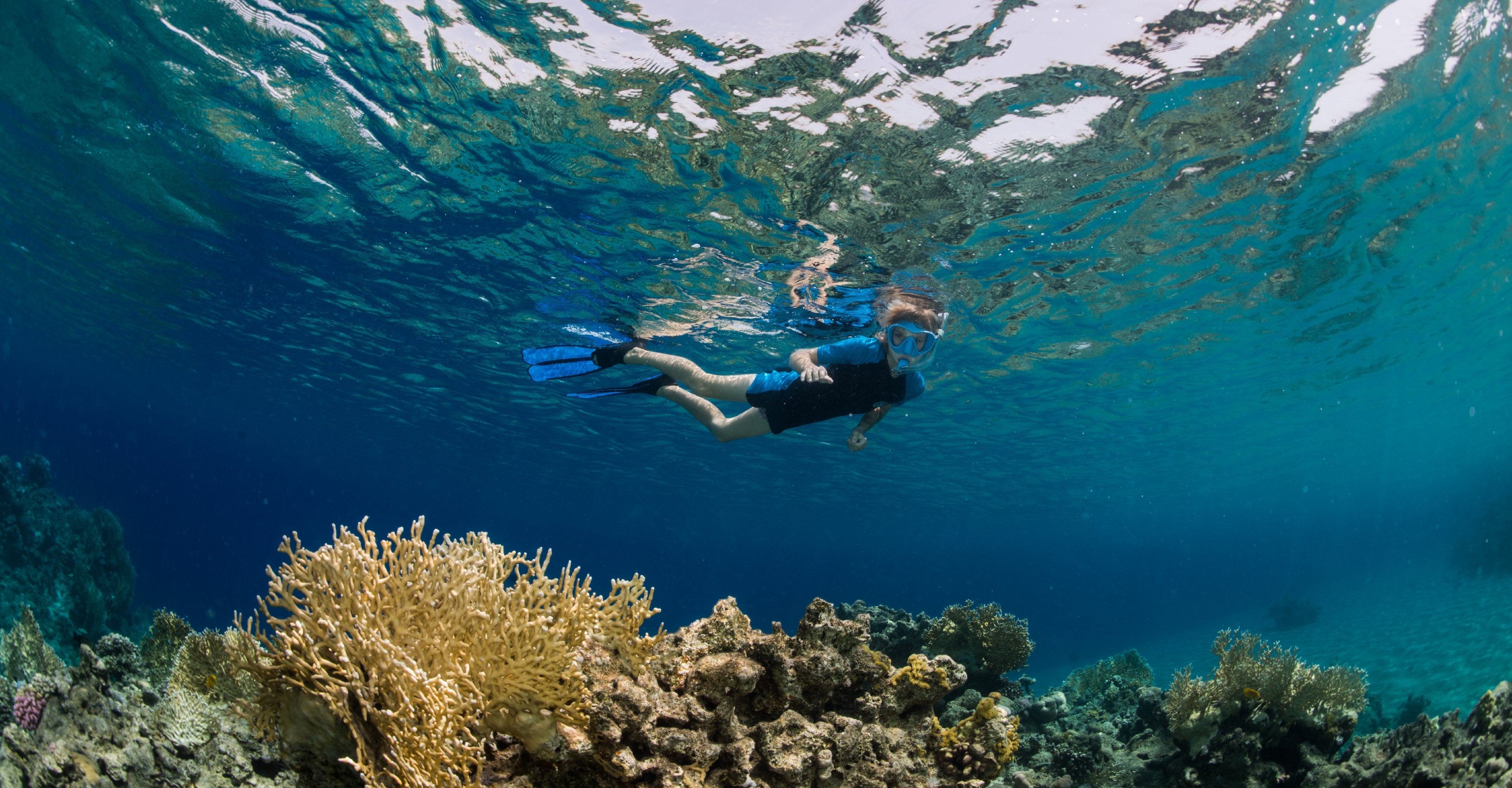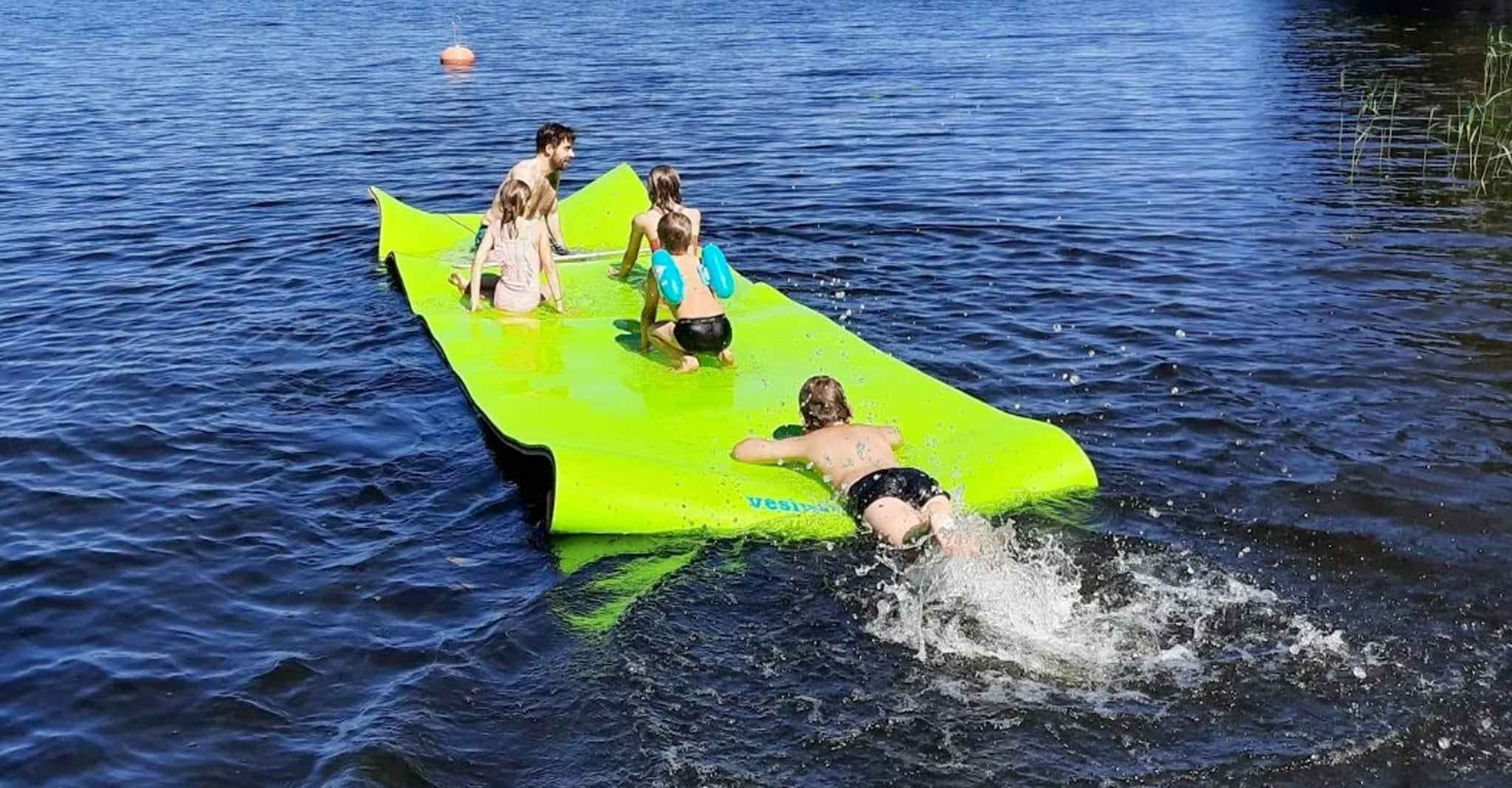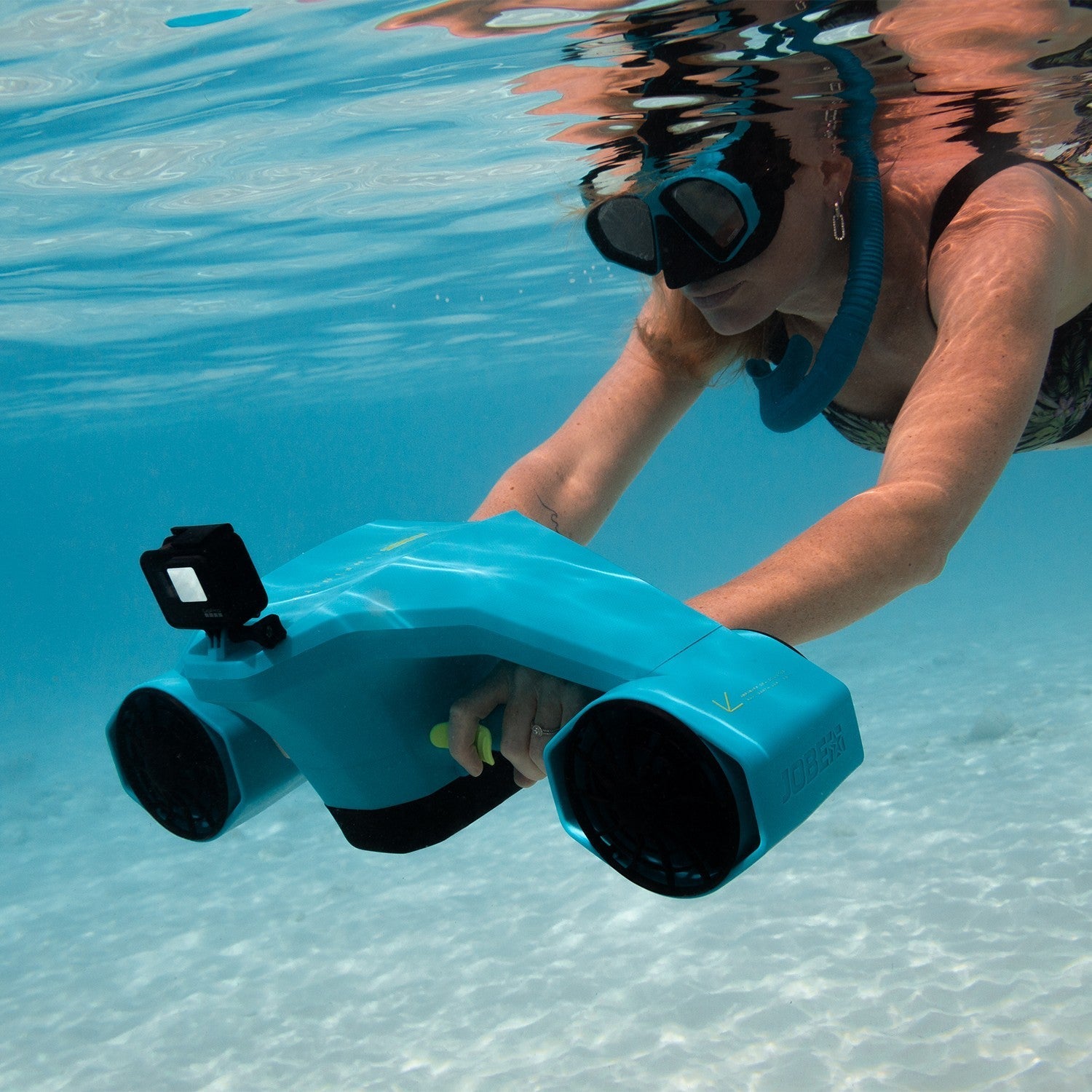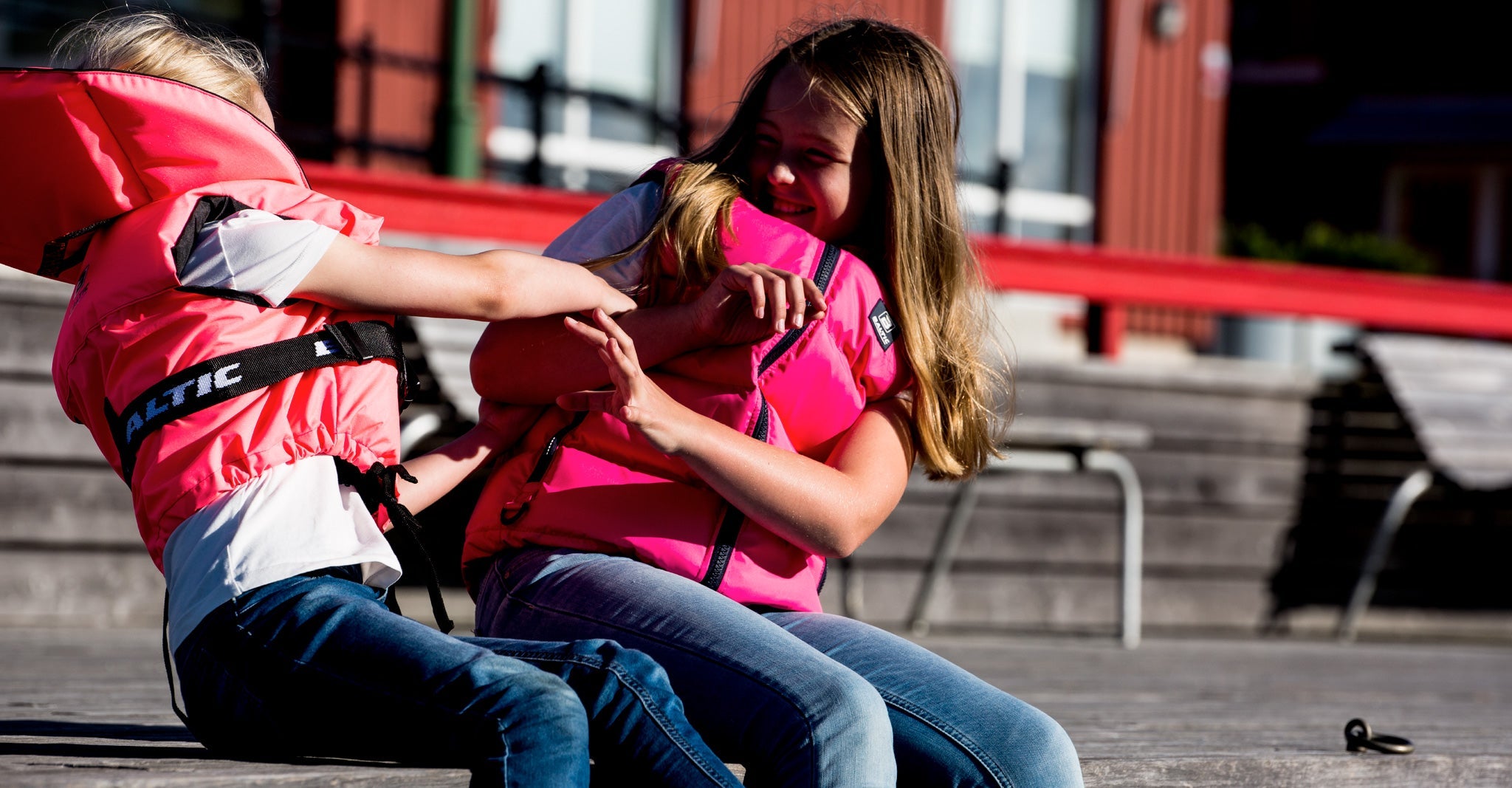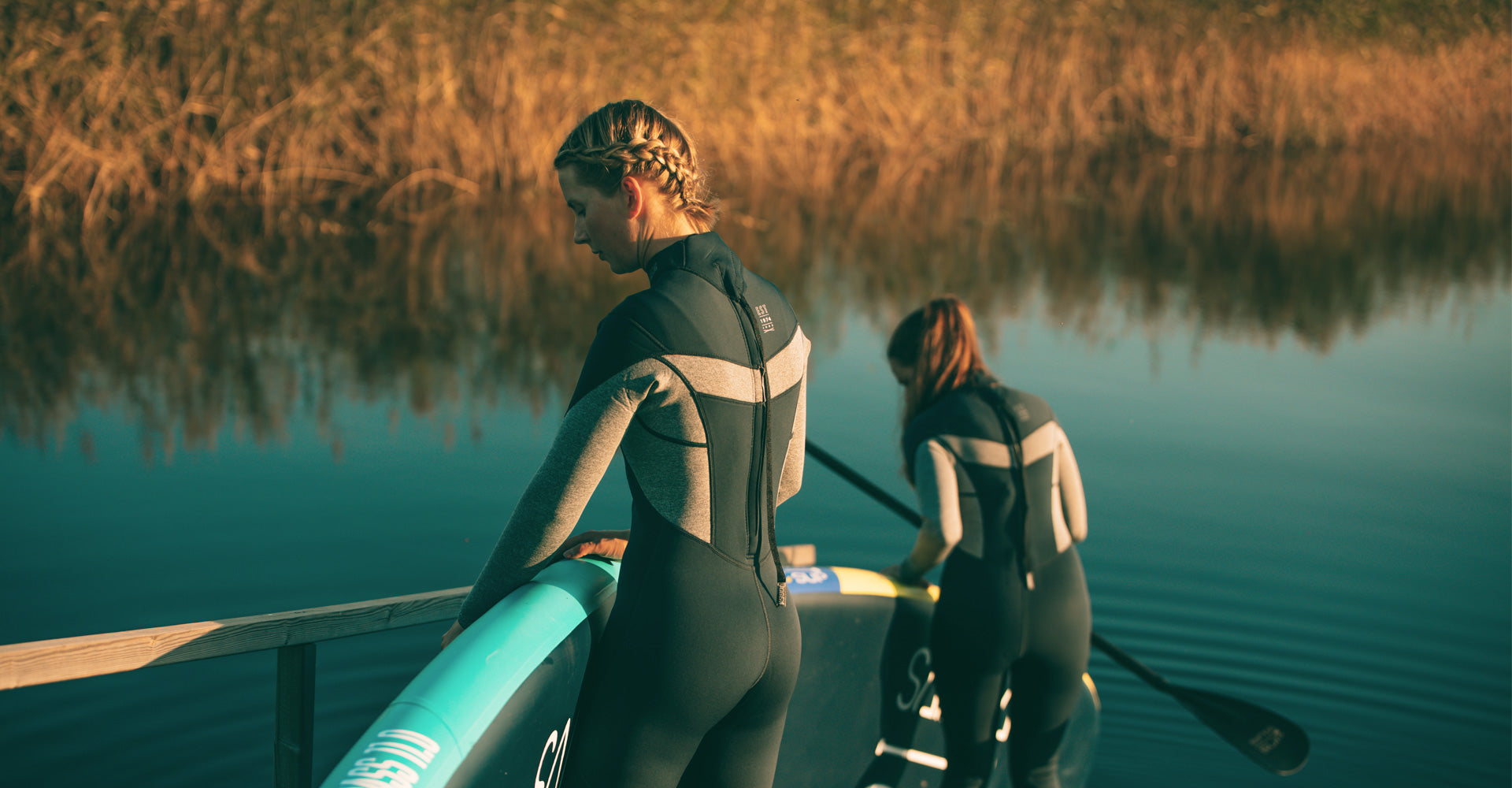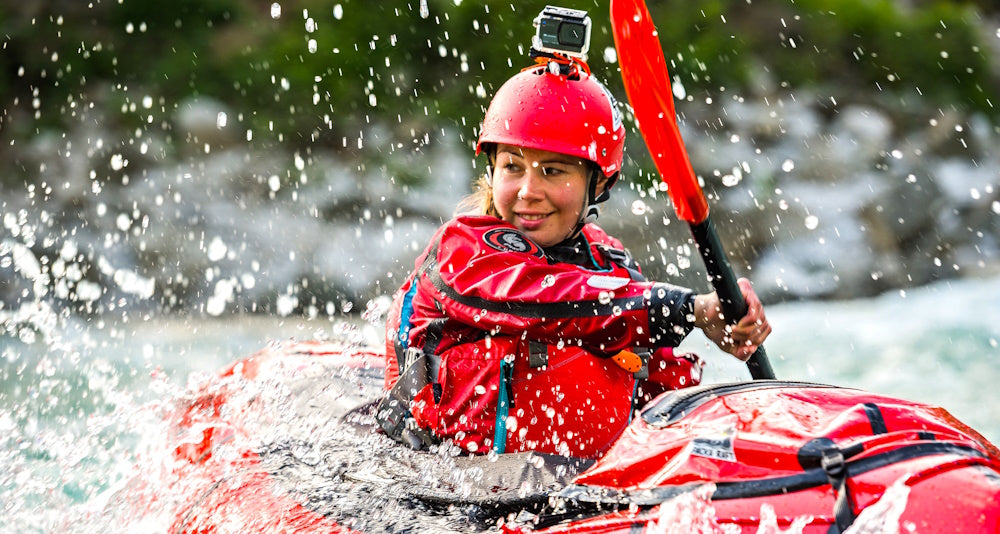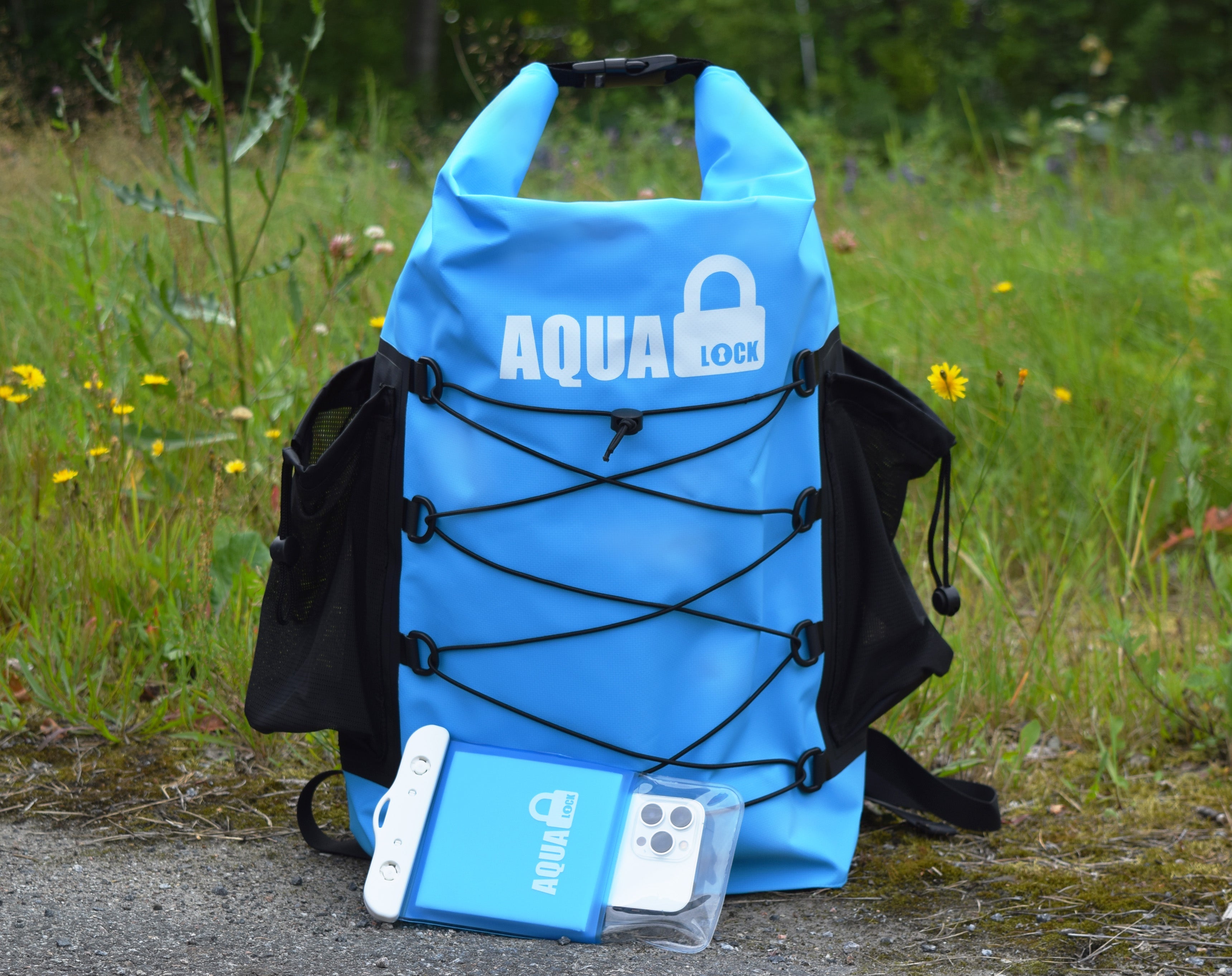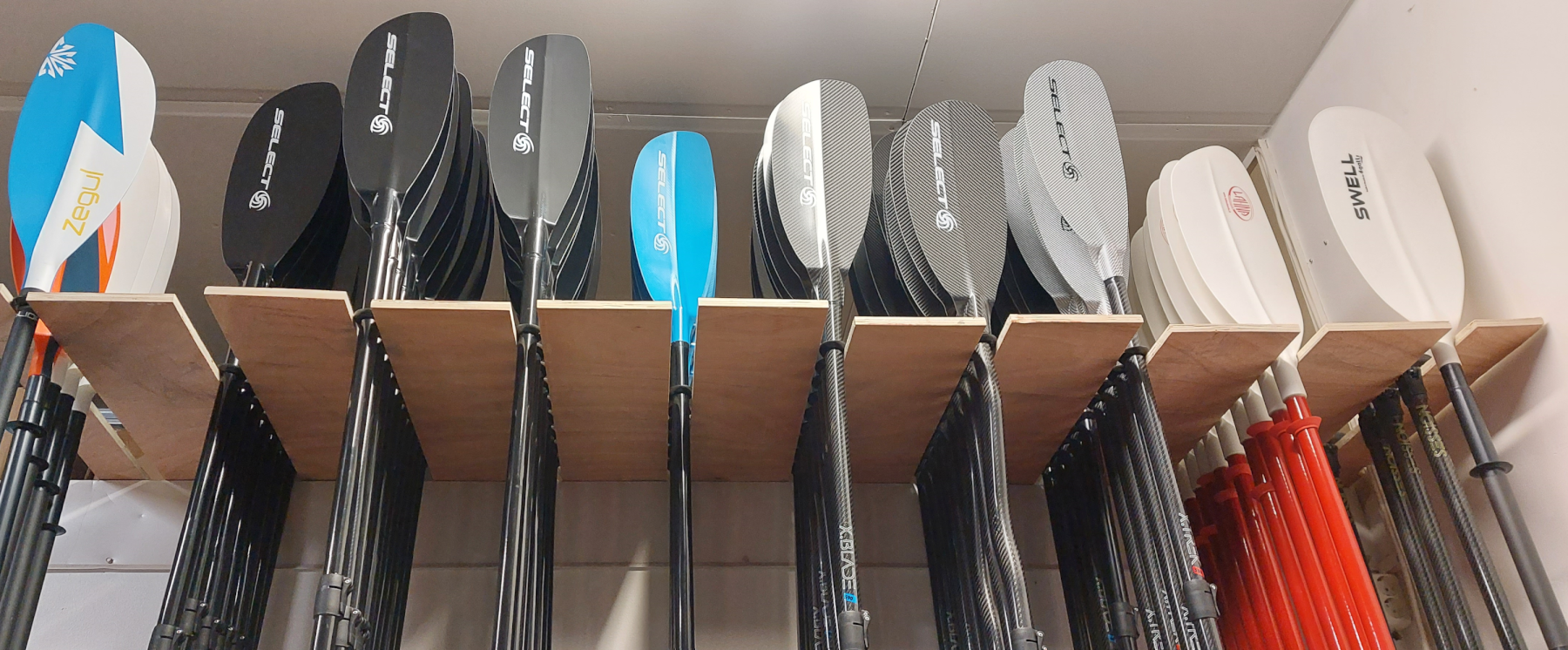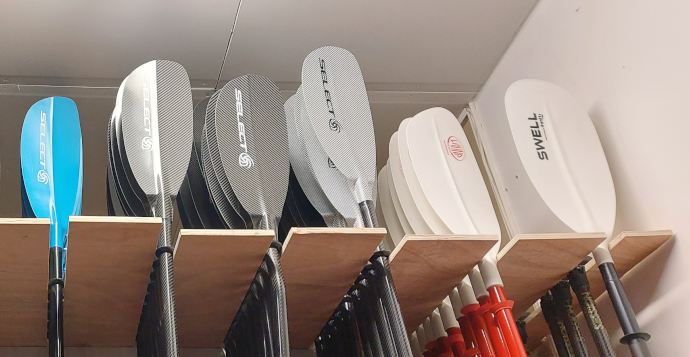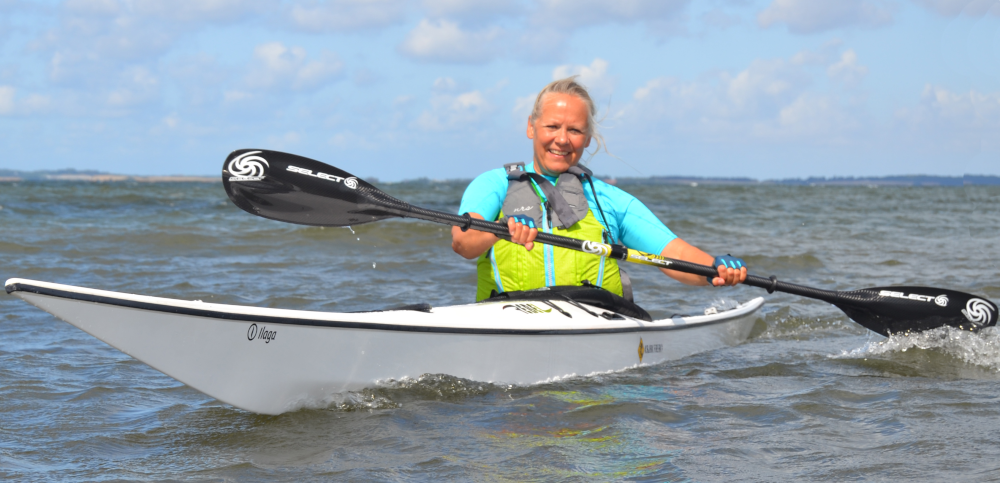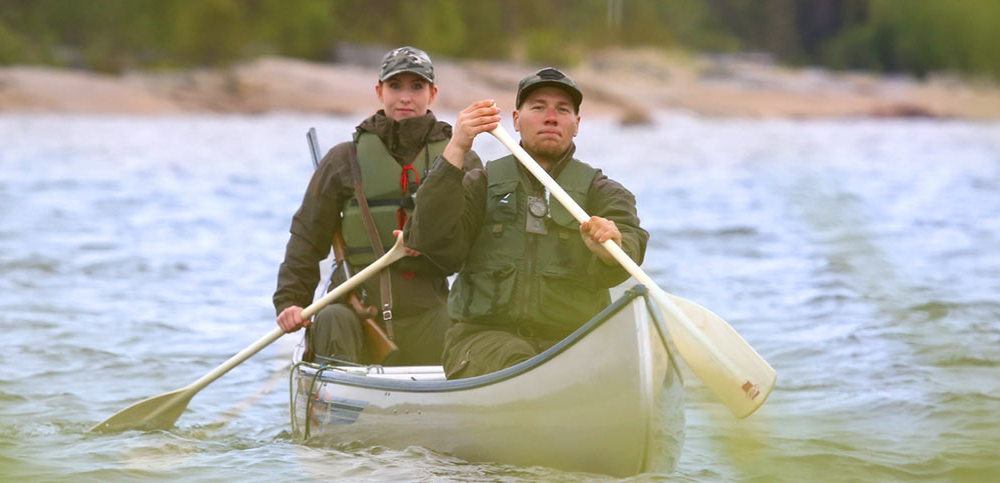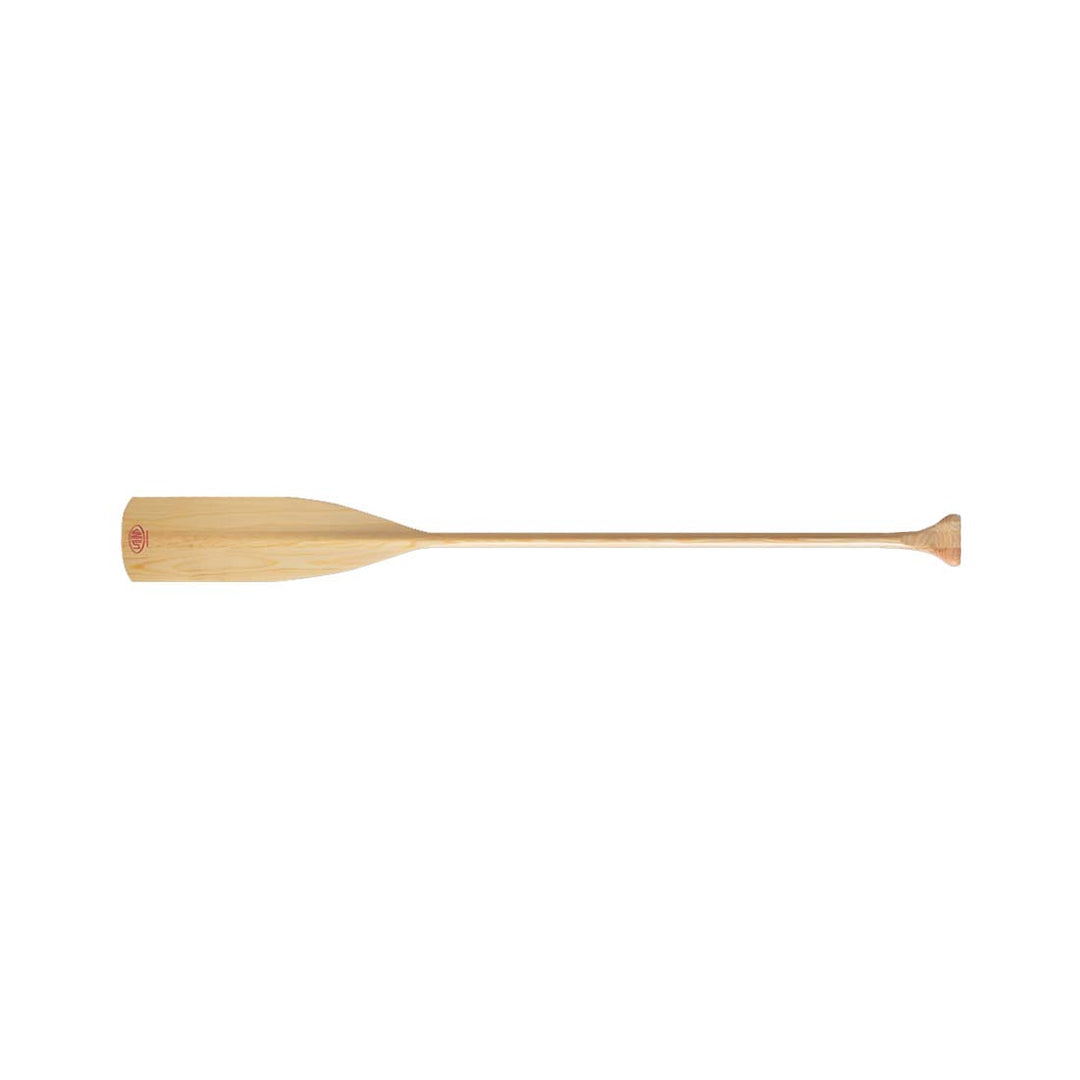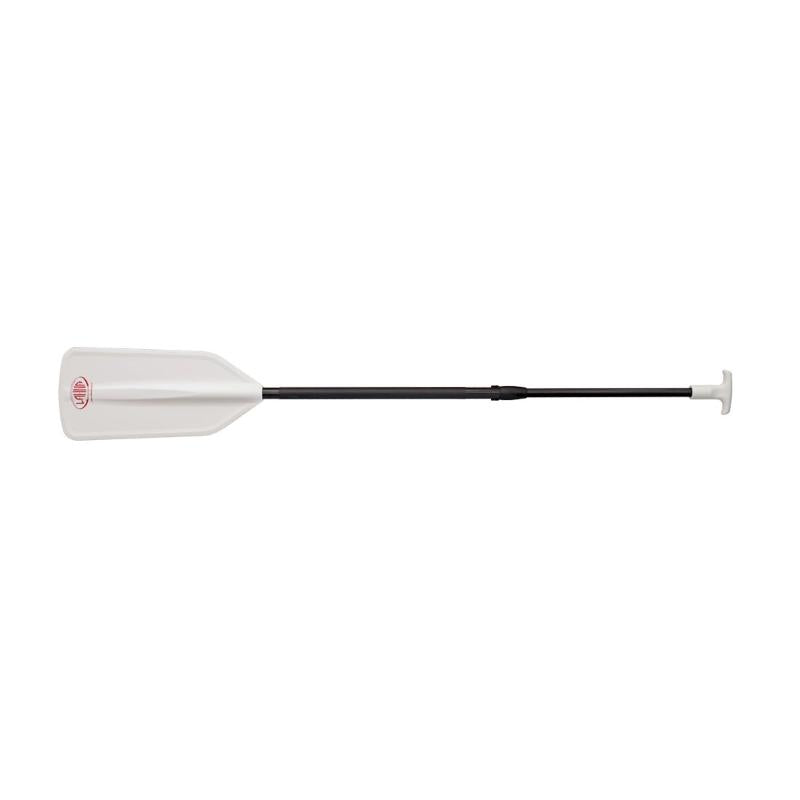Guidance and tips for buying a kayak or canoe paddle
Even on a short paddling trip, you can easily take hundreds of strokes, so the right kayak paddle will have a huge impact on your paddling speed, efficiency, feel and overall enjoyment. The lightest full carbon paddles weigh 750g and the heaviest basic paddles over a kilo, and with prices ranging from €30 to €450, there really is a lot to choose from. Read our guide which explains the most important criteria such as length, material, weight, paddle size and shape and choose the kayak paddle that suits you best. If there is one feature to remember, see point 1; length and how to determine the basic size of the paddle.
Not forgetting the kayak paddle's one-bladed friend; the canoe paddle, the end of the article also takes a look at the differences between the various types of canoe paddle and how to choose the right size.
However, if you are not interested in the terminology or technical details, and just want to paddle with the right equipment without the hassle of taking notes, or are buying a kayak paddle as a gift, contact our knowledgeable customer service team and we will be more than happy to find the best option for you.
info@vesiurheilu.fi
+358 (0)45 841 7744
Kayak paddles
Two-bladed kayak paddles for camping, rental, cottage, lake and sea.
The range includes durable and affordable aluminium paddles, rustic wooden paddles and top quality and lightweight composite paddles (carbon fibre, fibreglass) from renowned manufacturers such as Finnish Lahnakoski and French Select Paddles.
Canoe paddles
Simple and high quality canoe paddles.
You can choose from beautiful wooden paddles made in Finland by Lahnakoski, to adjustable metal-shaft paddles.

1. User length
When choosing a kayak paddle, it is a good idea to start by determining the length that suits you best. Reach your hand with your fingers straight up and measure the distance from the floor to your fingertips. The result of the measurement (e.g. 225cm) will be the right paddle length for you.
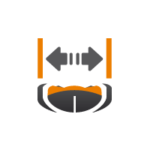
2. Width of kayak
The width of your kayak also affects the length of your paddle - the wider your kayak is, the longer paddle you need, and conversely, the narrower your kayak is, the shorter paddle you need for a natural and smooth paddling motion.
The majority of touring kayaks are universal, i.e. 57-63 cm wide, and you can choose a length to match your basic size.
If your kayak is less than 57cm we recommend that you subtract 5cm from the basic size, so in our example the optimal length of the kayak would be 225cm-5cm = 220cm.
If your kayak is wider than 63cm, we recommend adding 5cm to the basic dimension, 225cm+5cm = 230cm.
Open sit-on-top kayaks, packrafts and inflatable kayaks can be very wide with widths mostly between 80-100cm. For 80cm widths we recommend to add 10-15cm to the base size, for 90cm widths 15-20cm and for 100cm widths +20cm.
The seating heights and characteristics of these special watercafts vary widely, so the dimensions are approximate. Our kayaks often come with a basic paddle, which is great to practice and experiment with, then later on you know your preferences better and can buy a high-quality paddle with the exact length and features, and you can leave the cheaper basic paddle as a spare.
The above is a basic idea for choosing the length of a kayak paddle, but it's good to know that your paddling style will also influence your choice of paddle.
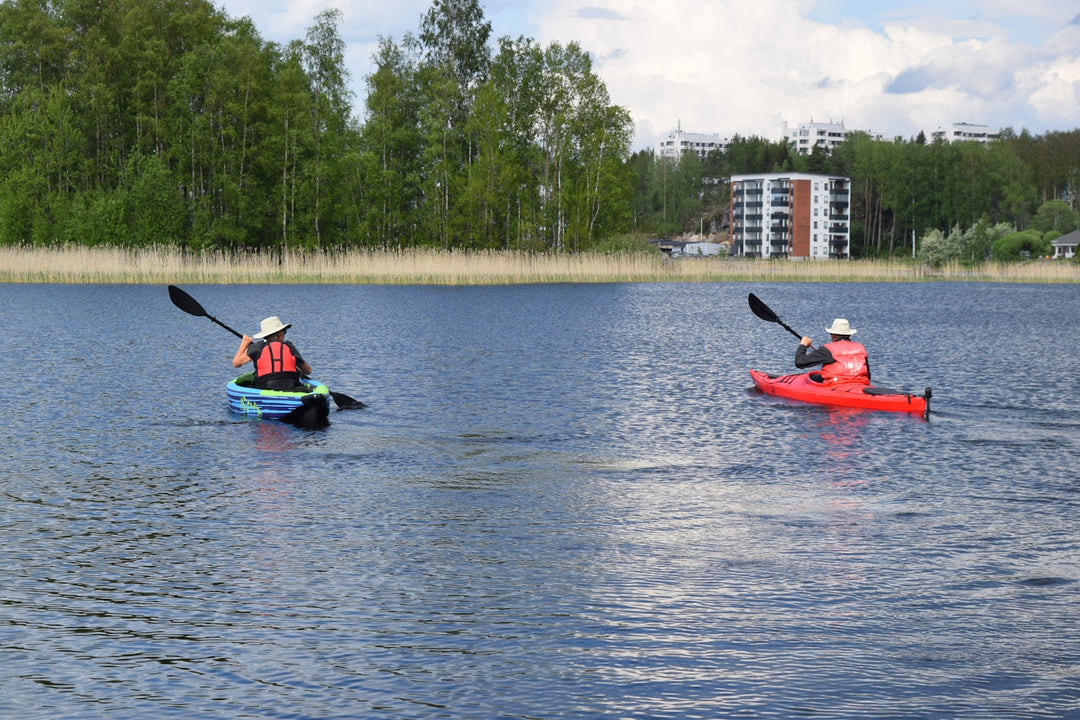

3. Paddling style (high)
Experienced paddlers often have a high paddling style which allows for dynamic paddling, i.e. the paddle is at a higher angle to the water and the paddle runs close to the sides of the kayak. If your paddling style is high, reduce the base size by 3-5cm.

4. paddling style (low)
If your paddling style is lower, allowing for a more relaxed and lighter paddle, choose a kayak paddle with a basic length. If you are a beginner and don't know your paddling style yet, choose a basic size paddle.

5. Blade angle/feathering
When the blades are at different angles to each other, the top blade is aerodynamically at a better angle and therefore the wind resistance is significantly lower.
Almost all the paddles in our range have either a gradual or a freely adjustable blade angle, but before buying a paddle you should check that it has either an adjustable blade angle or a fixed angle to suit your purpose.

6. Blade size/shape
Our paddles have blades ranging from 550-660cm2 in surface area. The more surface area you have, the heavier and more powerful each stroke of the paddle will be.
Big, strong or technically skilled paddlers prefer large paddles and for smaller paddlers and touring paddlers we recommend a smaller paddle to start with. The most popular surface area is 590cm2.
The paddles come in different shapes and sizes. For those with a long, steady trip, we recommend an elongated, oval and narrower paddle, which means less energy is spent paddling. This smaller paddle does not take as much upwind, and is lighter in the water because the water resistance is reduced with each stroke. The "sea" paddle works as a general term, so even if you paddle exclusively on lakes/rivers, you can safely choose a sea paddle for your hobby. A good example of a sea kayak paddle is Select X-Line with a 590cm2 blade.
For those looking for a more sporty paddle, for example for training purposes, or for short trips, we recommend a paddle which has a larger blade size. As the surface area of the paddle increases, so does the resistance to wind and water when paddling. With a larger-bladed paddle it's easier to squeeze into a faster pace and paddling rhythm, but it is also more exhausting on the muscles and uses more energy, making it less ideal for long, flat distances than a sea paddle. An example of this is Select X-Blade with 660cm2 blades.
Your paddling angle will also influence which type of paddle you should buy for your hobby. High-angle paddlers, who are often experienced, will get more out of a large paddle, while beginners or those who paddle at a more leisurely pace are more likely to tire too quickly with an isolavel paddle. So as a simple reminder; high paddling angle = bigger paddle and low paddling angle = narrower sea paddle.
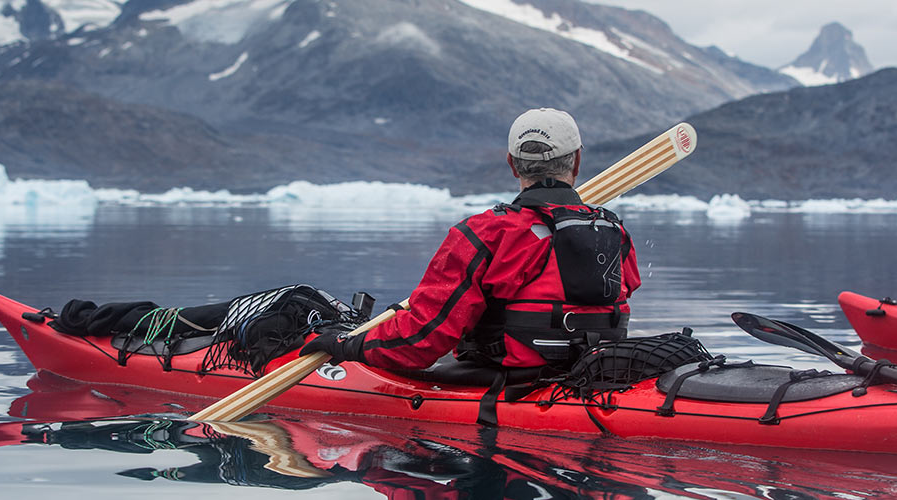
A true super-sea kayak paddle is this
Greenlandic paddle!
This Inuit traditional paddle, which looks like an aircraft propeller, is unique and perfect for ultra-long trips on the open waters.
The blades of the paddle
It's worth paying attention to the materials of your paddle - the right choice will improve efficiency, comfort and feel. When you take a stroke on one blade, you naturally lift the other blade into the air and when you factor in the number of repetitions, the seemingly small difference in weight becomes a big factor on a longer trip.
The lightest paddle material of all is carbon fibre, the second lightest is glass fibre and the heaviest are plastic/nylon. The price level between materials is correlated to weight, i.e. the lightest is the most expensive and the heaviest the cheapest.
Carbon fibre is a very rigid material, not only because of its lightweight structure, but also because the paddle blades do not flex as much against the water. and this allows for efficient power transmission when using a paddle like this Select's X-blade.
The fibreglass is in the medium-range, which is one of our most popular paddle materials due to its price/lightness/quality ratio. With this construction you get a competent paddle that is light, responsive and functional. A good fibreglass paddle is something like the Select X-line paddle series.
The most affordable option for the paddle is nylon/plastic. This is the material that can withstand the most careless use and is therefore often the first choice for beginners, family use or rental businesses. The material flexes and bends, adding to its durability. As a slight minus, durability comes at the expense of paddling efficiency. Egalis Swell for example, is a good nylon-bladed basic paddle.
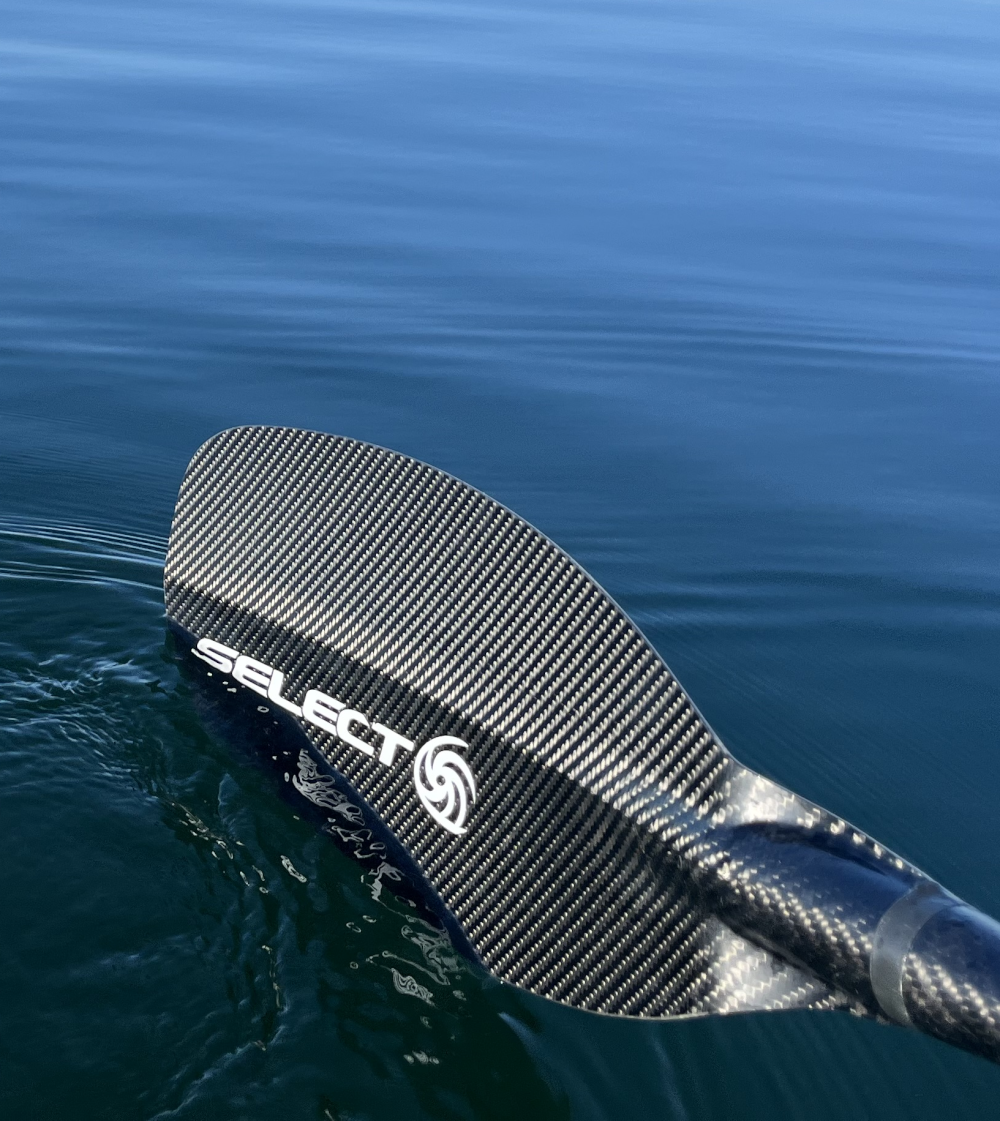
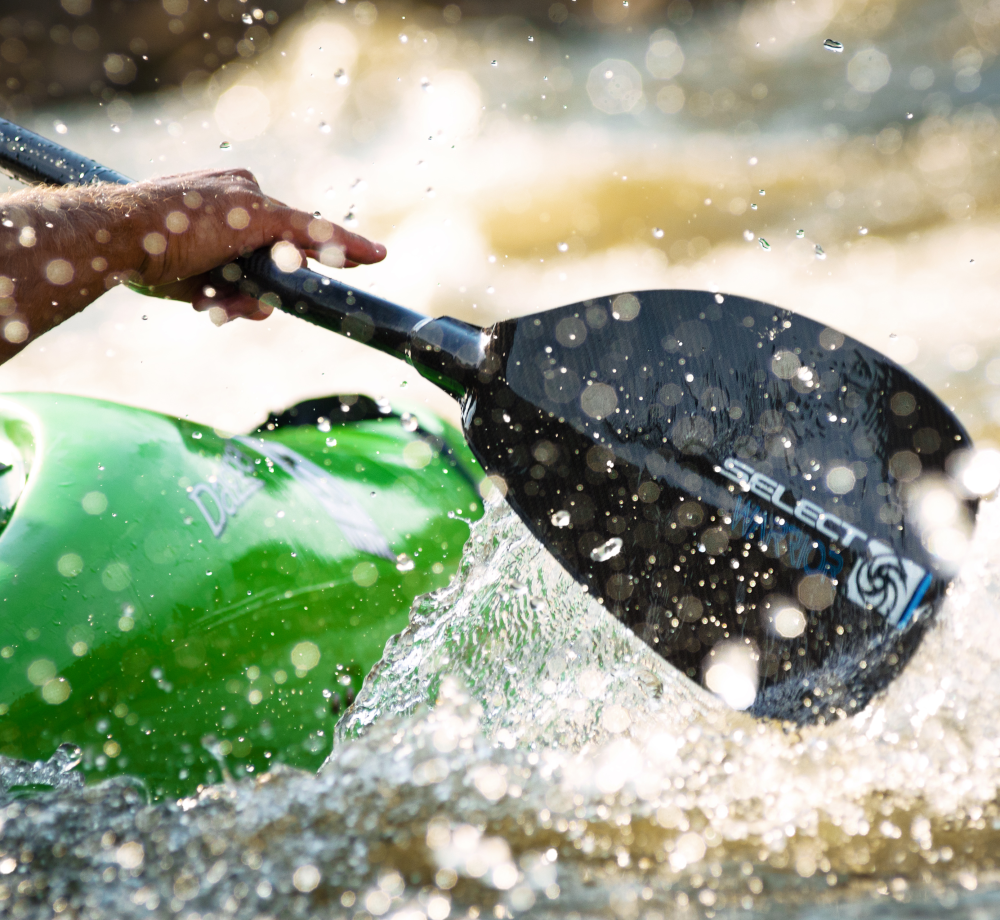
The shaft of the paddle
The material of the paddle shaft also has a big impact on different aspects of paddling. More affordable paddles often have aluminum shafts, like in the Saimaa Kayaks basic paddle. Aluminium is very durable and will serve for a long time in use. Even at this low price, there is a slight downside - aluminium is a heavy material and sensitive to heating and cooling, so especially in colder weather, prolonged handling requires a gloved hand.
Like blades, there are also shaft-constructions like carbon fibre, glass fibre and their blends. These are really lightweight, spectacular and less susceptible to temperature fluctuations than aluminium. For these benefits you have to pay more than aluminium, but often just one paddling trip is enough to cover the extra cost in terms of comfort.
The design of the kayak paddle shaft is also different in some models. Most shafts are straight, but for example Select X-Blade Ergo is equipped with a curved shaft. This ergonomic shaft allows you to keep your wrists at a more natural angle when paddling, so they don't strain as much, which is a great feature if you have limited wrist-mobility.
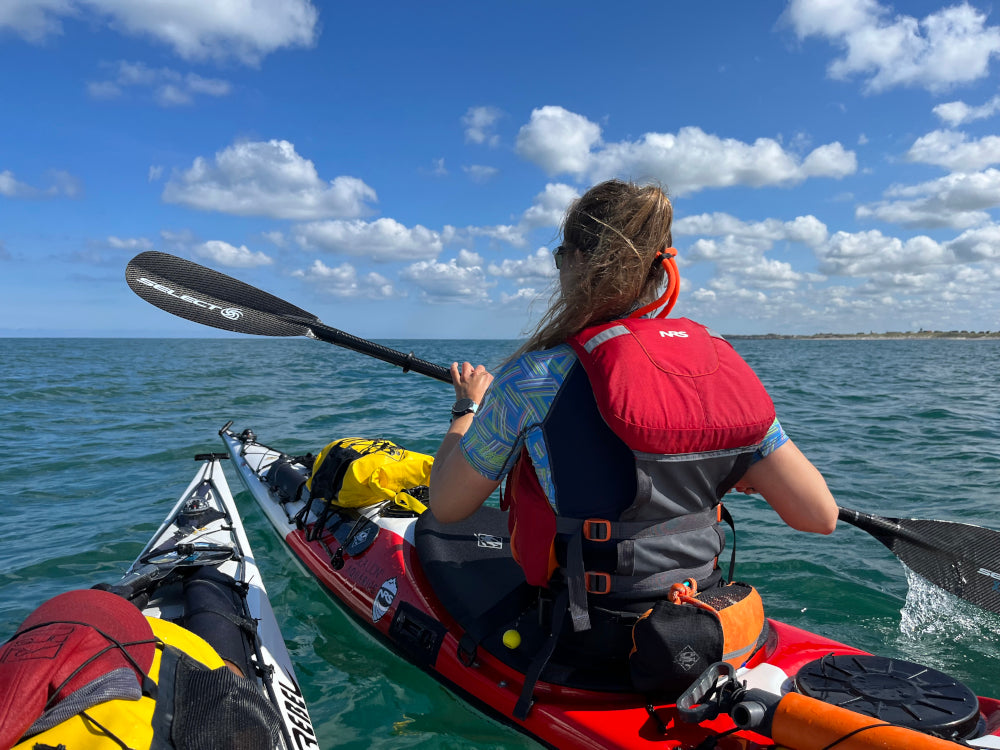
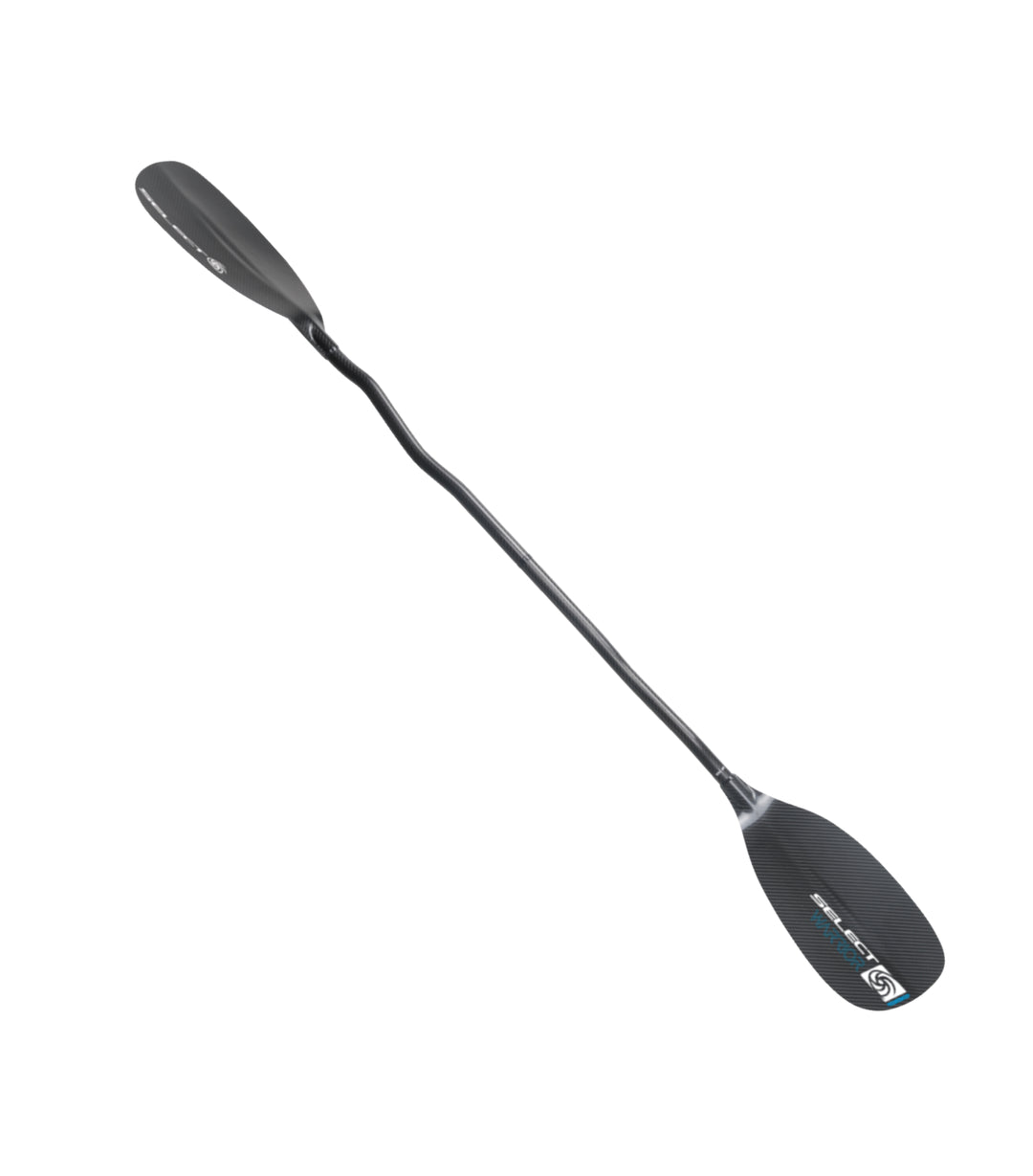
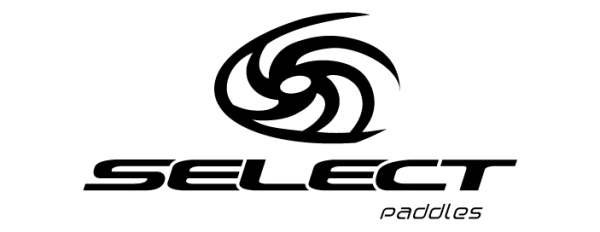
Select Paddles
The crown of our kayak paddle range are the high quality kayak paddles from the top brand Select. Handcrafted in France, these are equipped with a 10cm variable length and free blade angle adjustment, allowing you to fine-tune the length to suit your skill level and preferences.
Canoe paddle
Choosing a canoe paddle is often much easier as these paddles are not as technical or complex as kayak paddles.
The first step is to find out the length you need. If you are only looking for a paddle for your own use, you can measure an approximate length by measuring how much distance there is from shoulder height to the floor when standing - this is a suitable paddle length +-5cm depending on your paddling style. When buying a paddle as a gift, it's good to know that a paddle of the right length is often about 30-40cm shorter than the user.
There are also differences in the design of paddles, some are more shovel-shaped and others are elongated like a beaver's tail. There are also straight paddles and paddles with a small angle, the so-called bent-angle paddles.
A classic shovel-shaped paddle is a safe and easy choice, especially if the paddle is going to be a general purpose paddle. If you are looking for a long distance paddle, an oblong design is better.
Canoe paddles are often pretty and made of wood. A well treated and stored wooden paddle will stay in good condition for a long time.
Paddles are also available in plastic and, unlike wooden paddles, they are often adjustable. This is particularly useful when the paddle is going to be used by several different people, for example at a cottage or rental business. An example of an adjustable paddle Lahnakoski Indyhandy.



